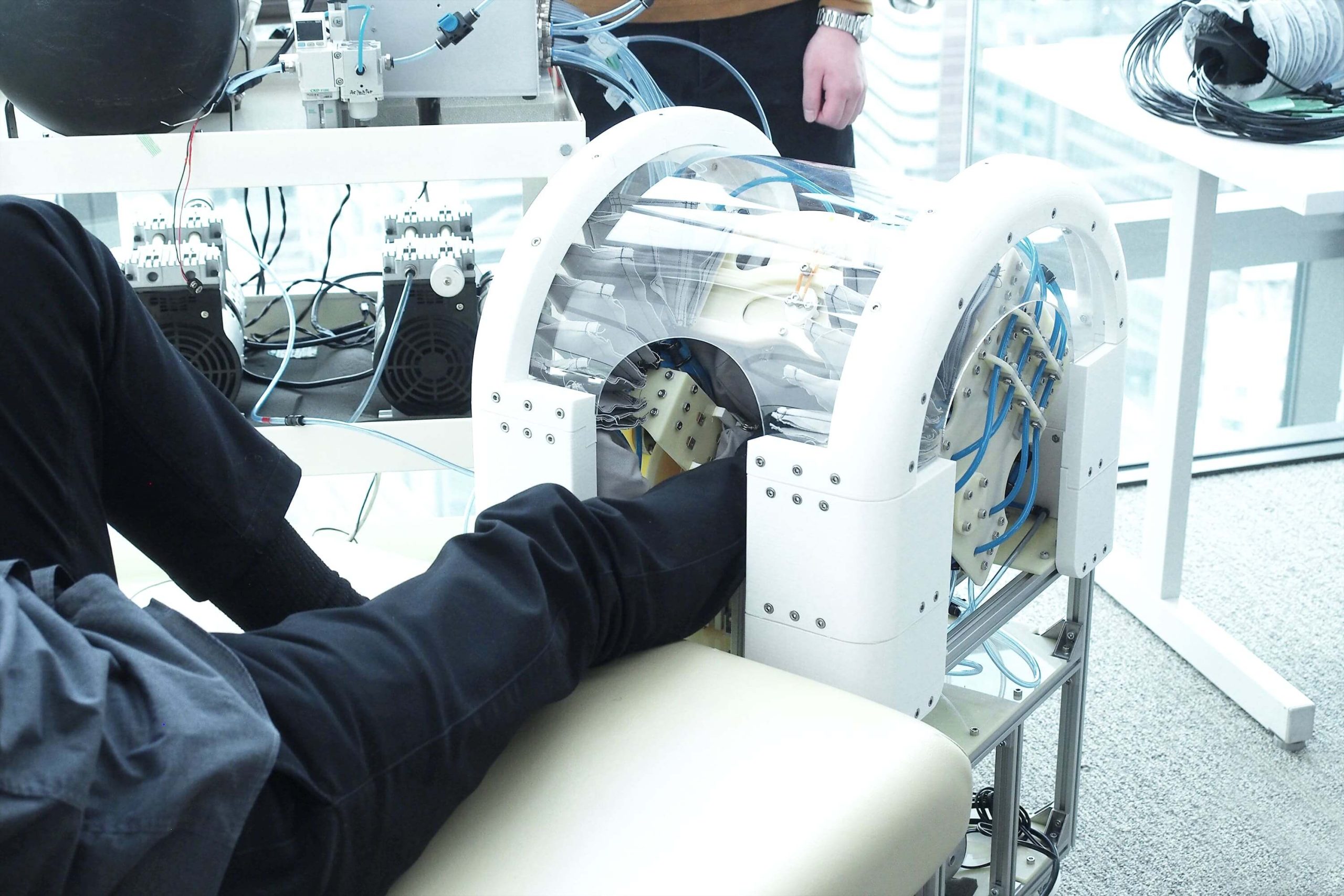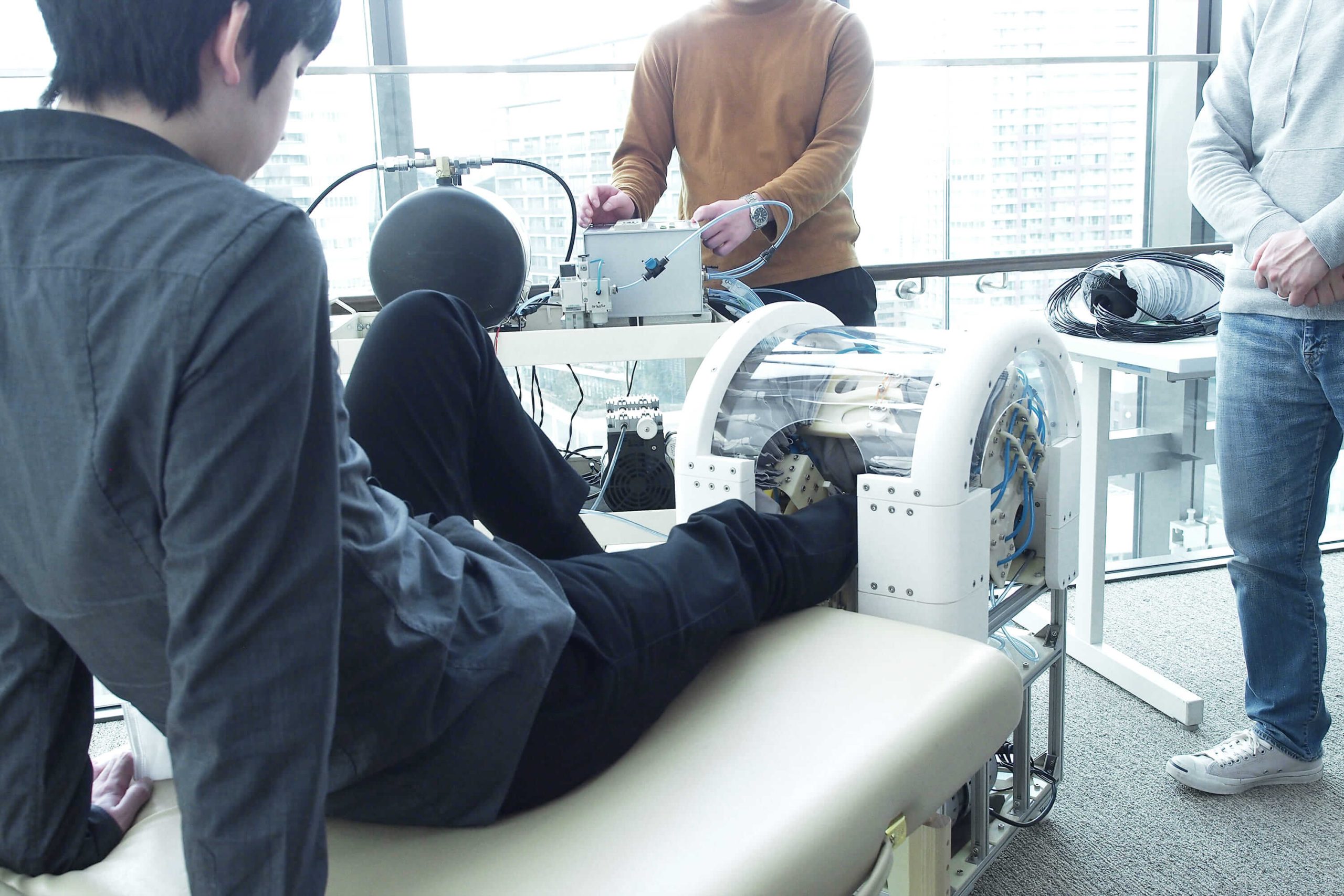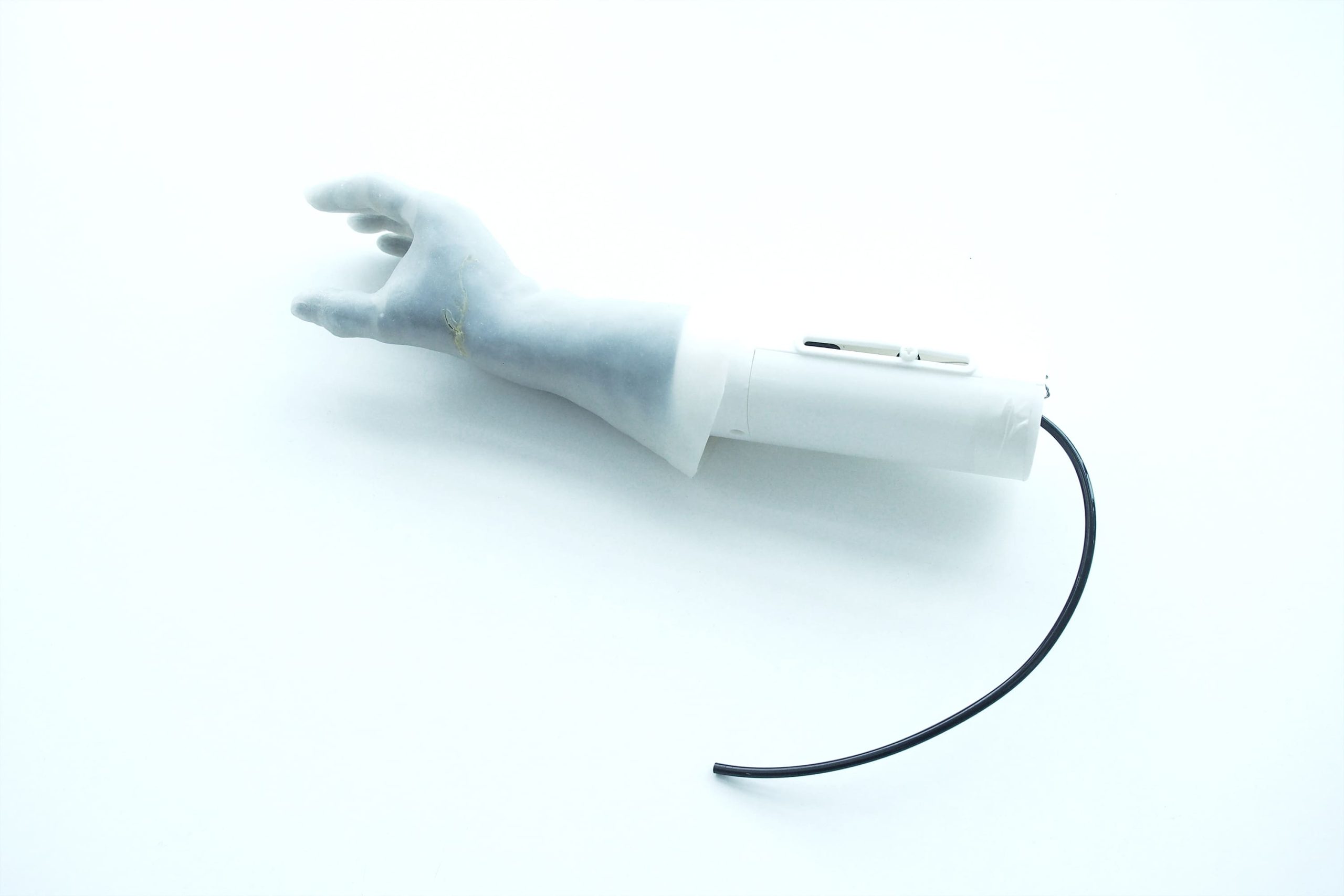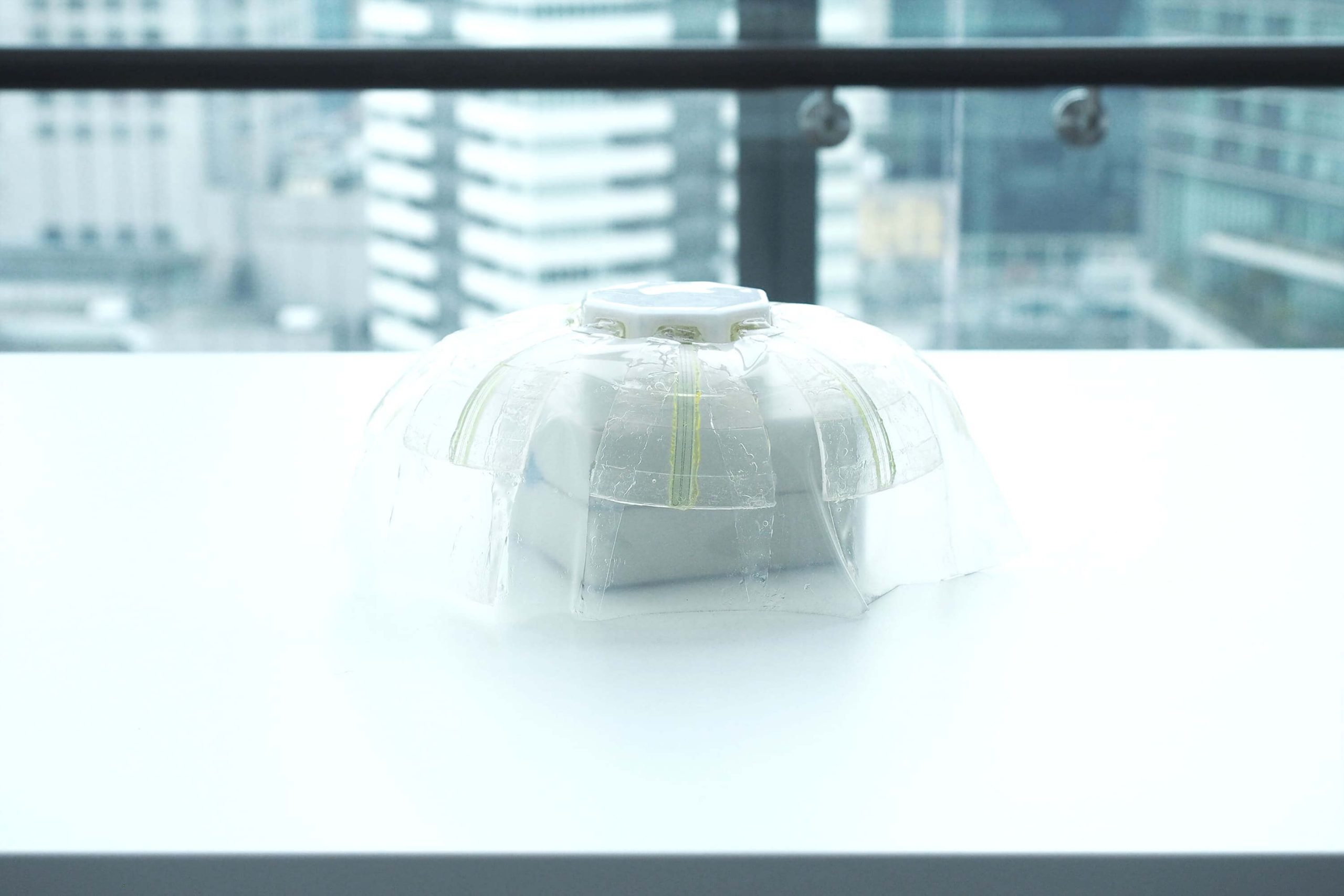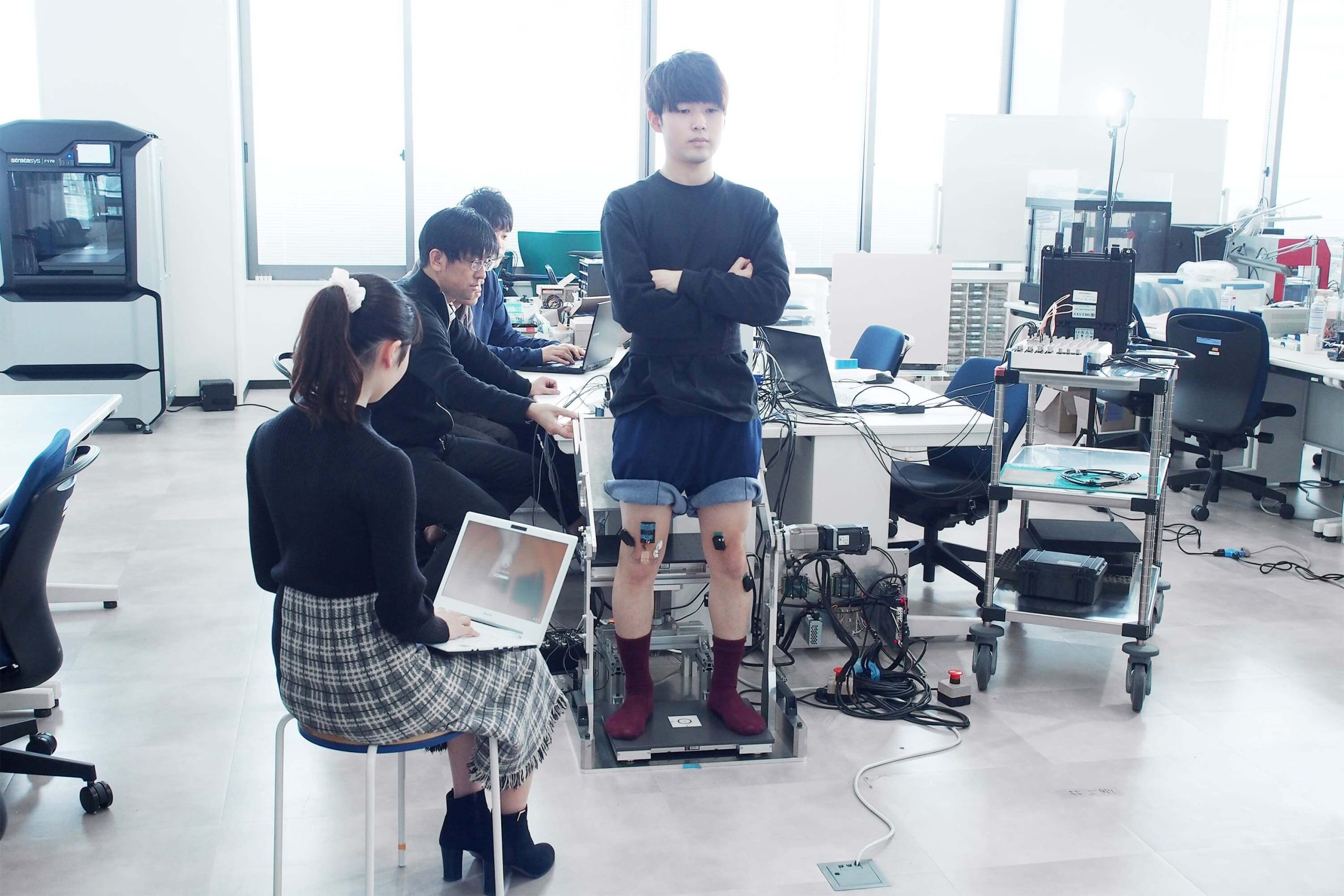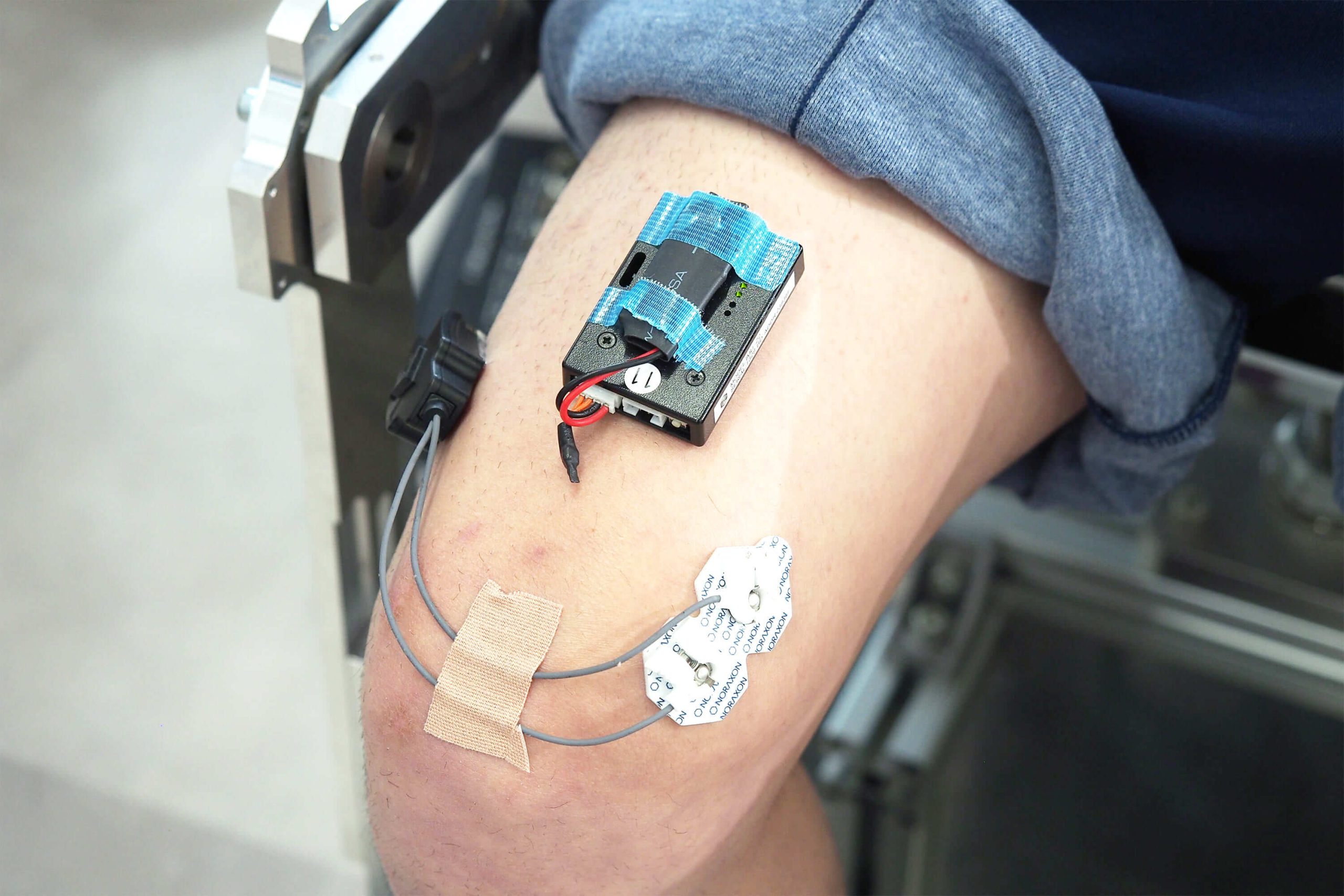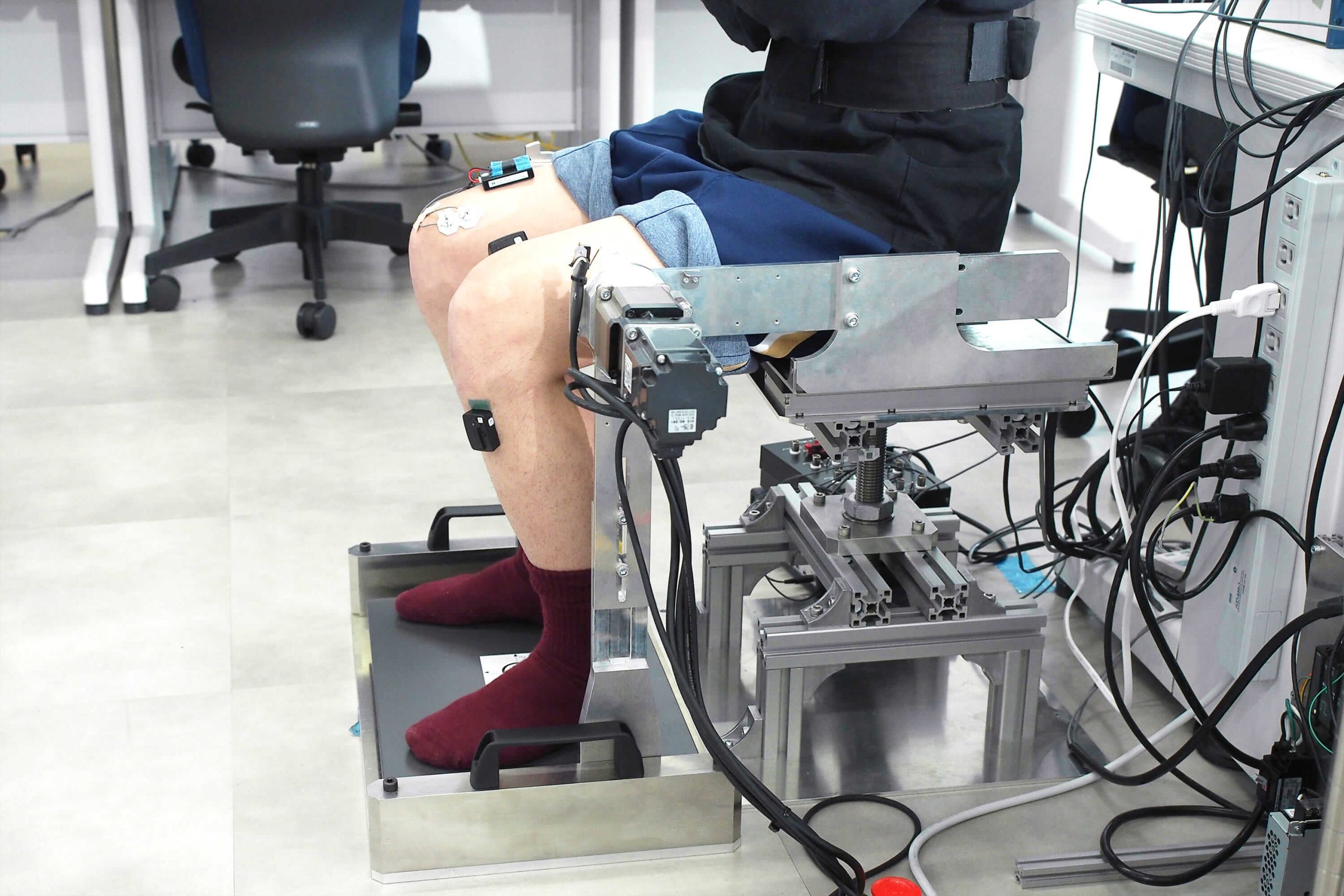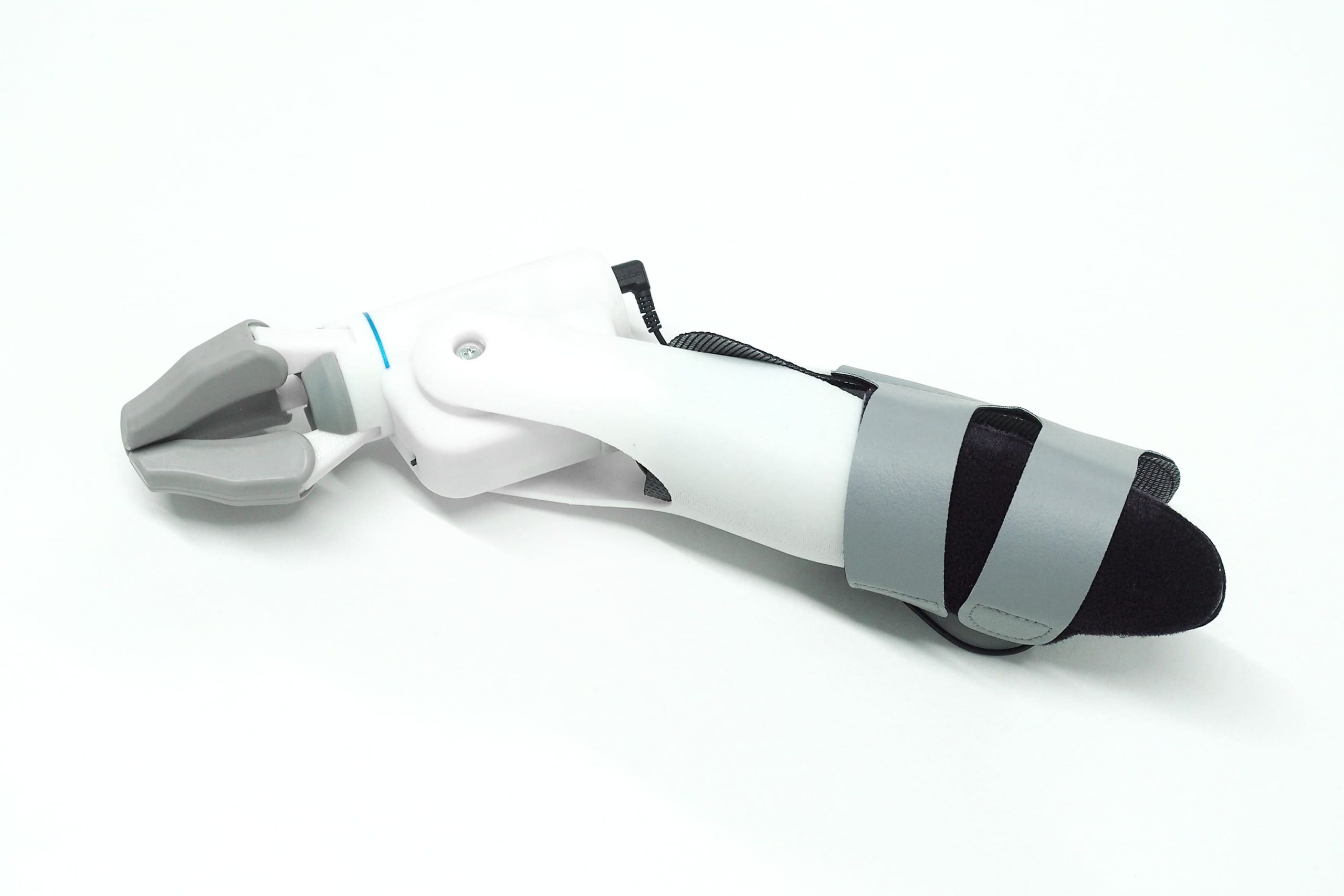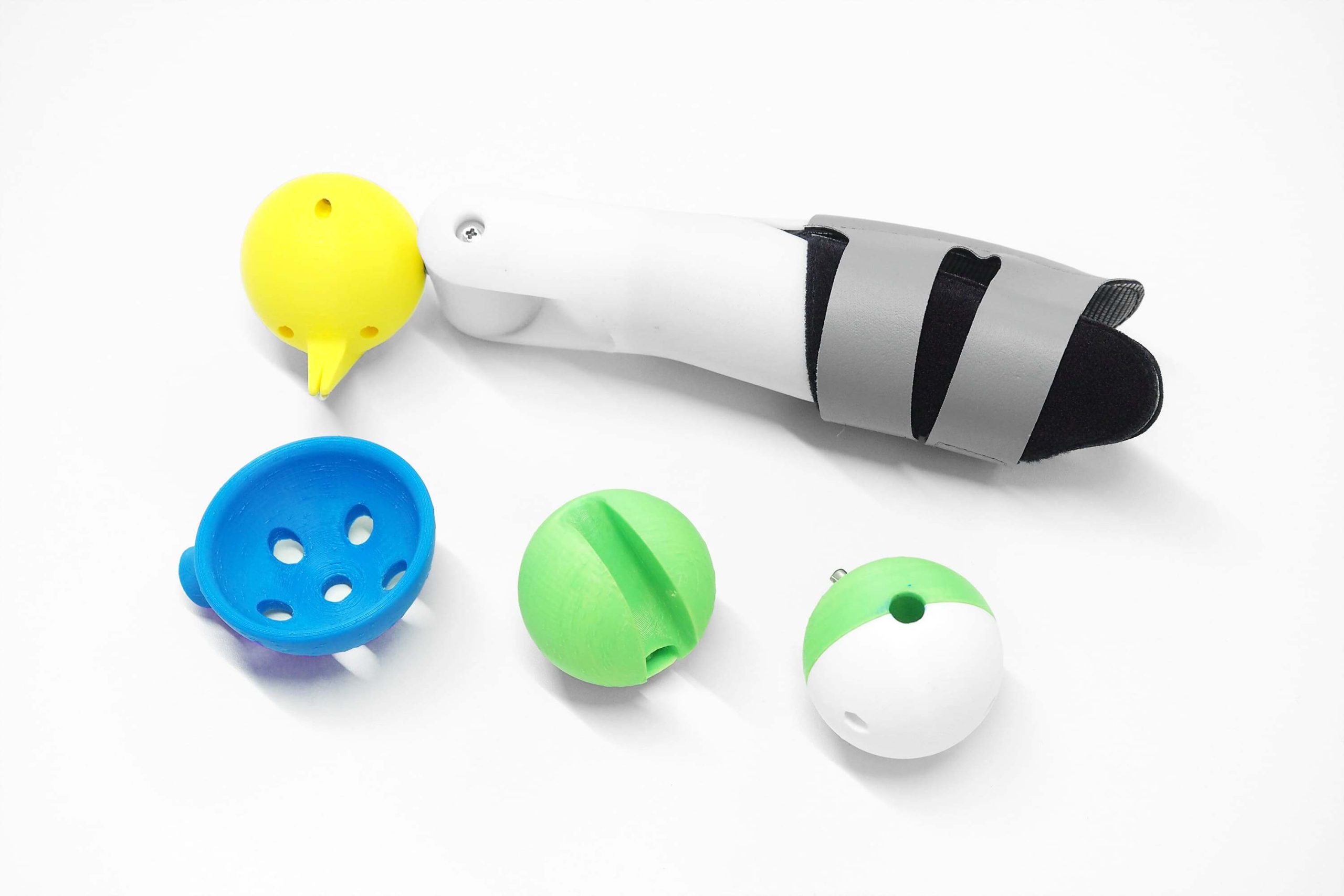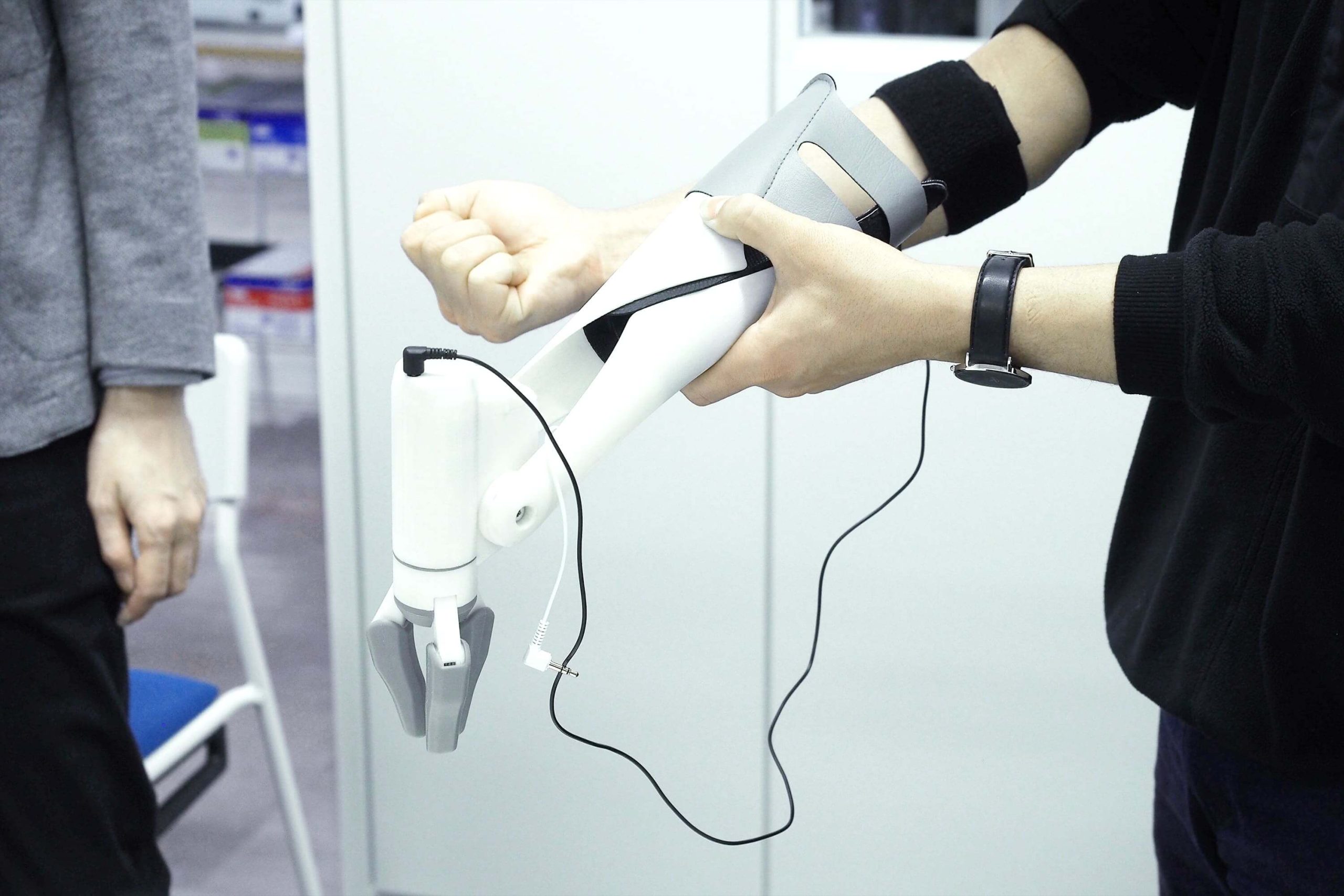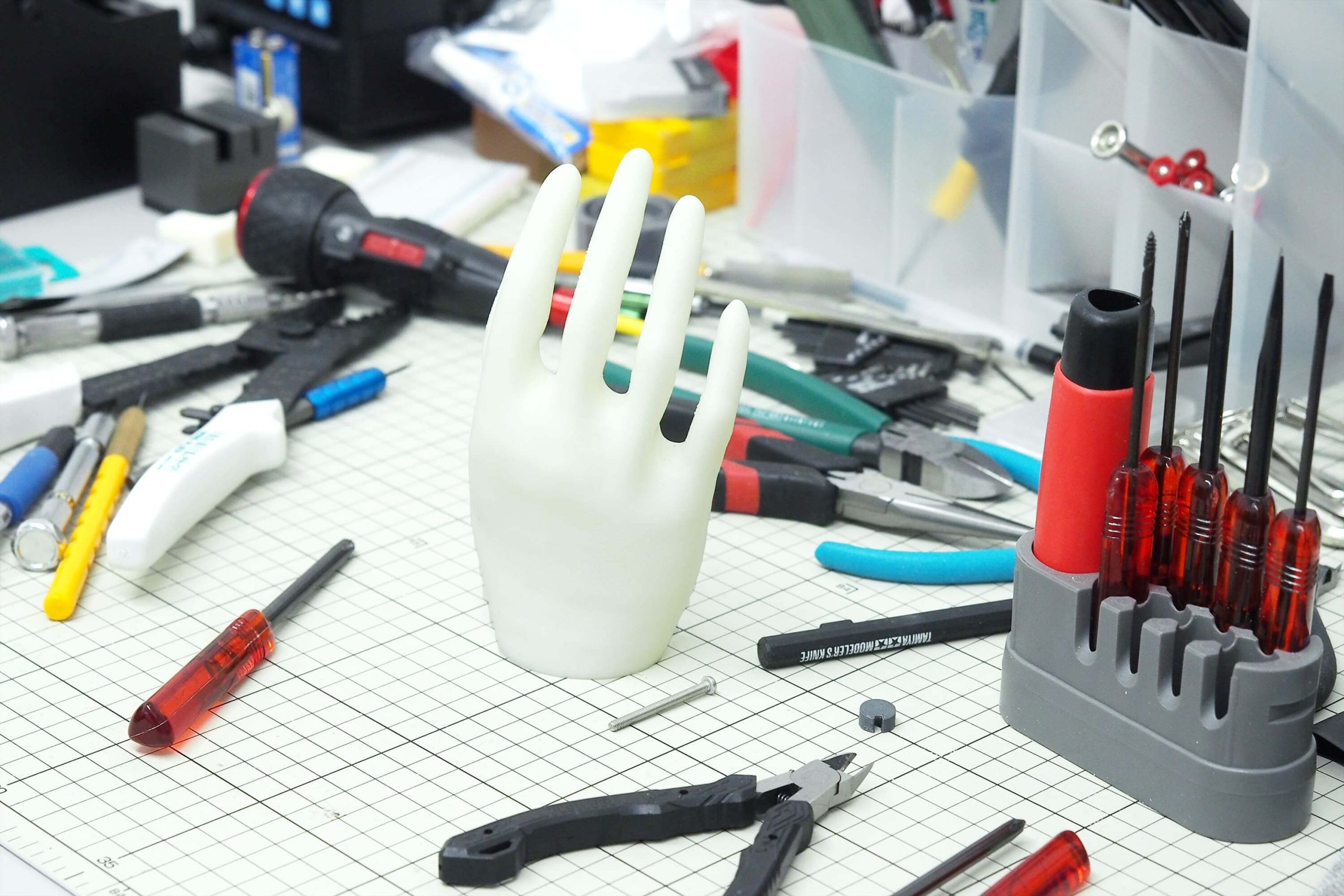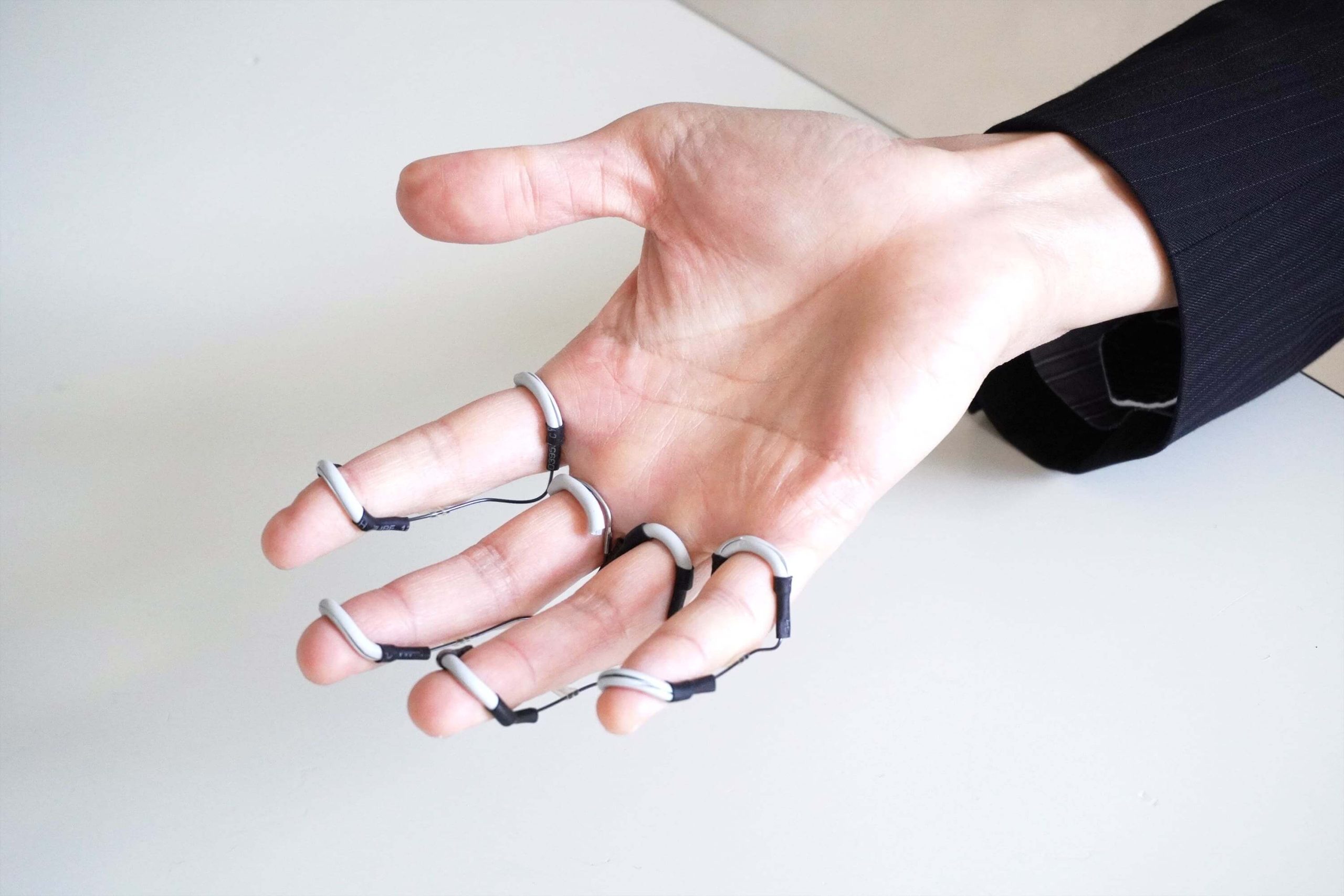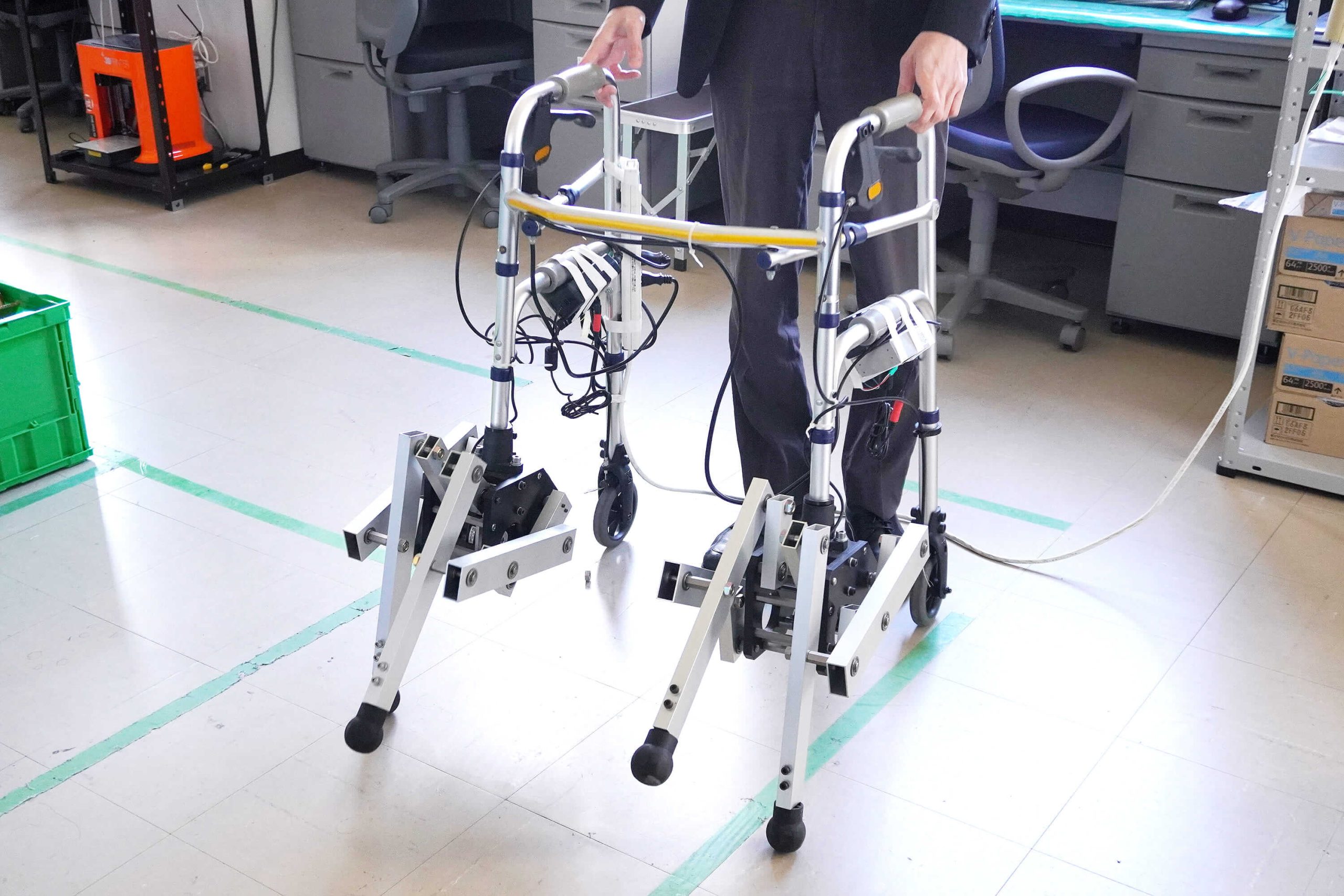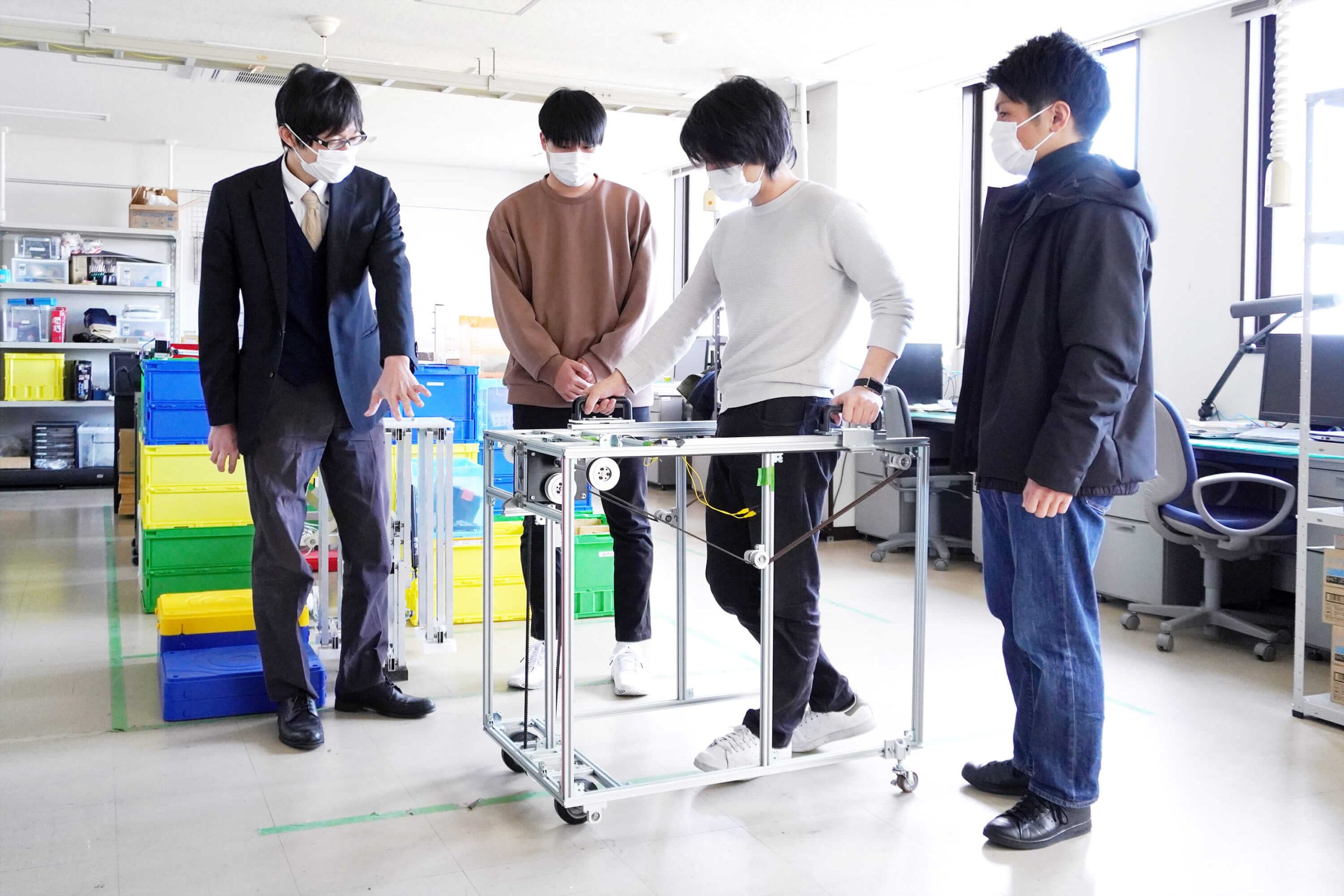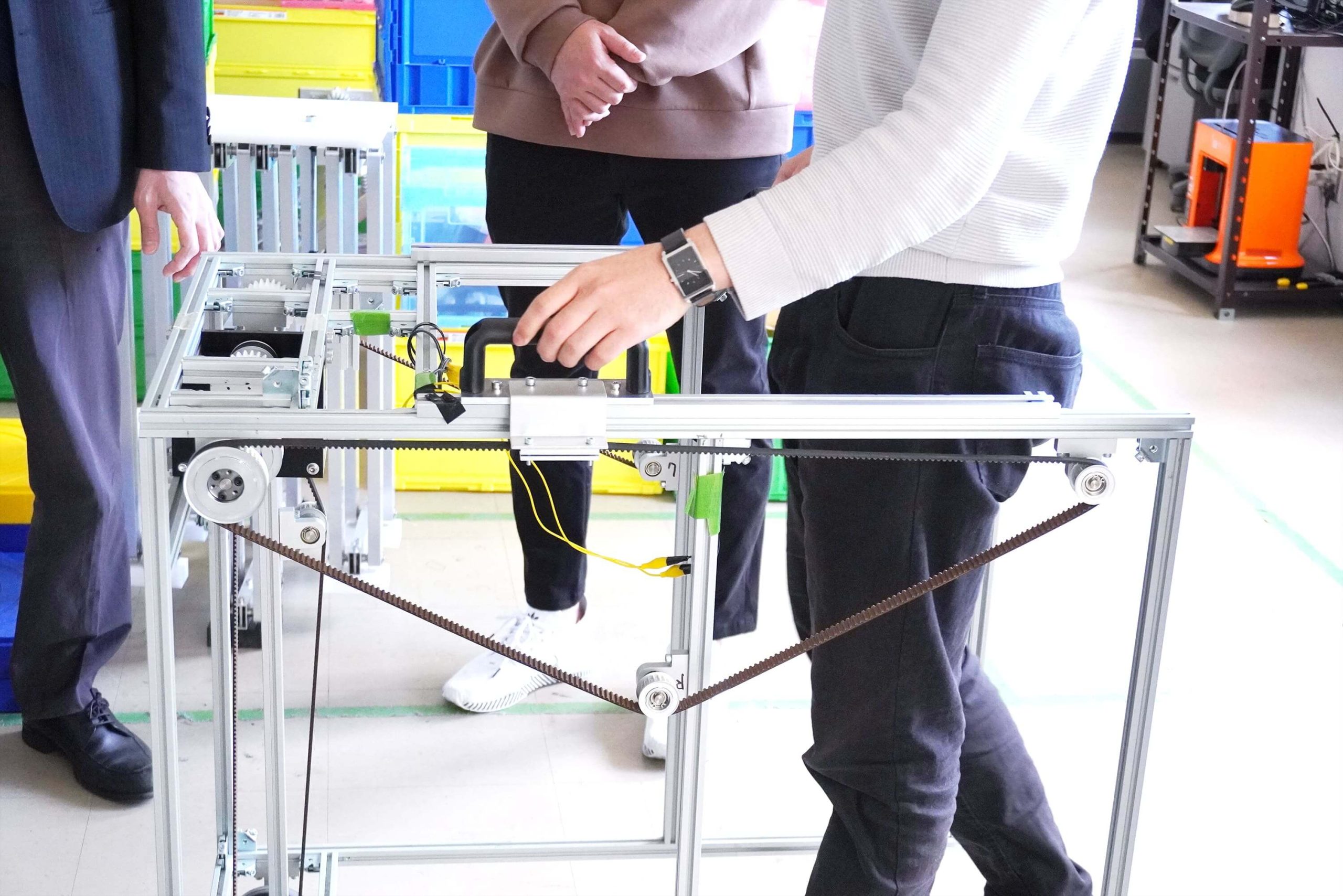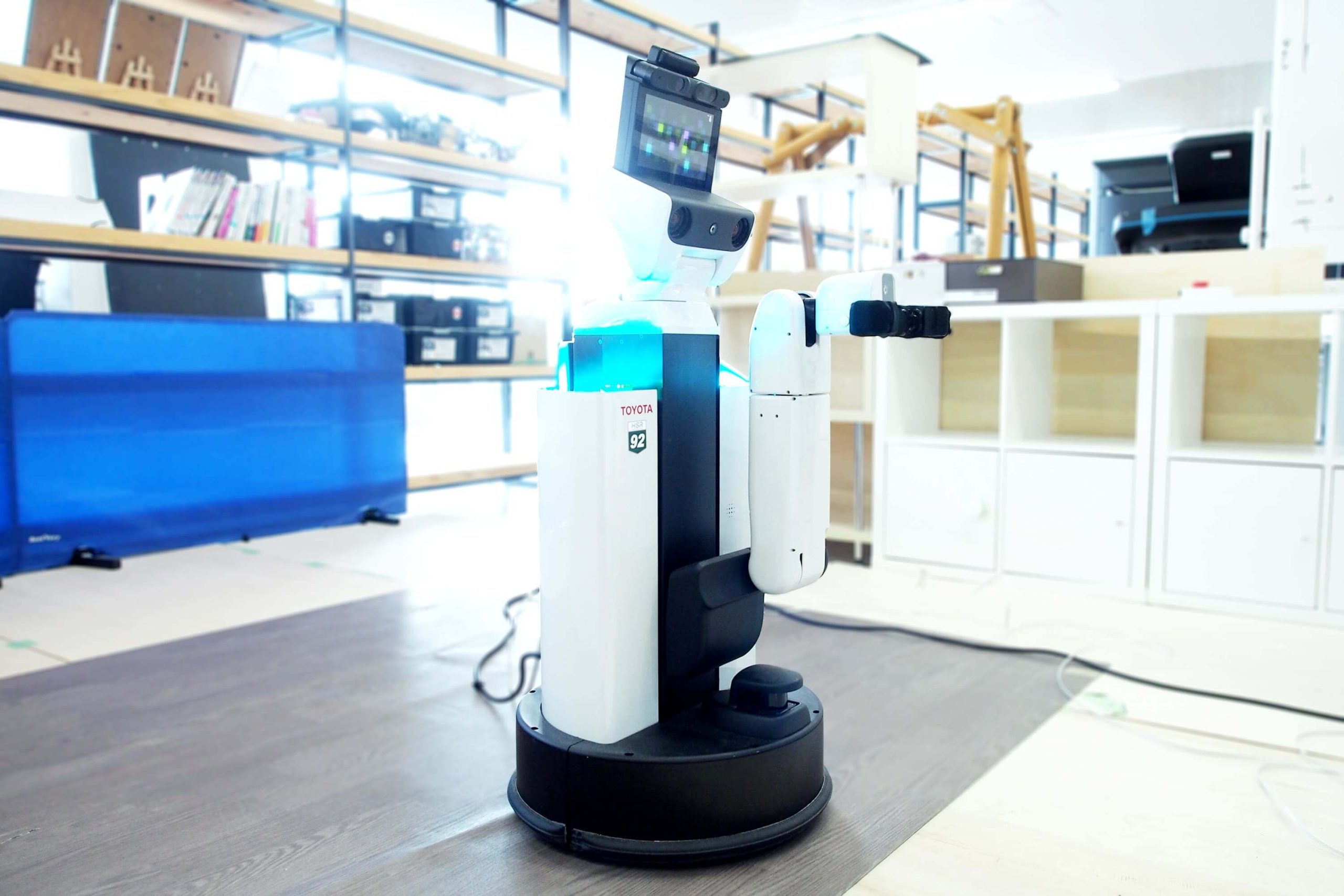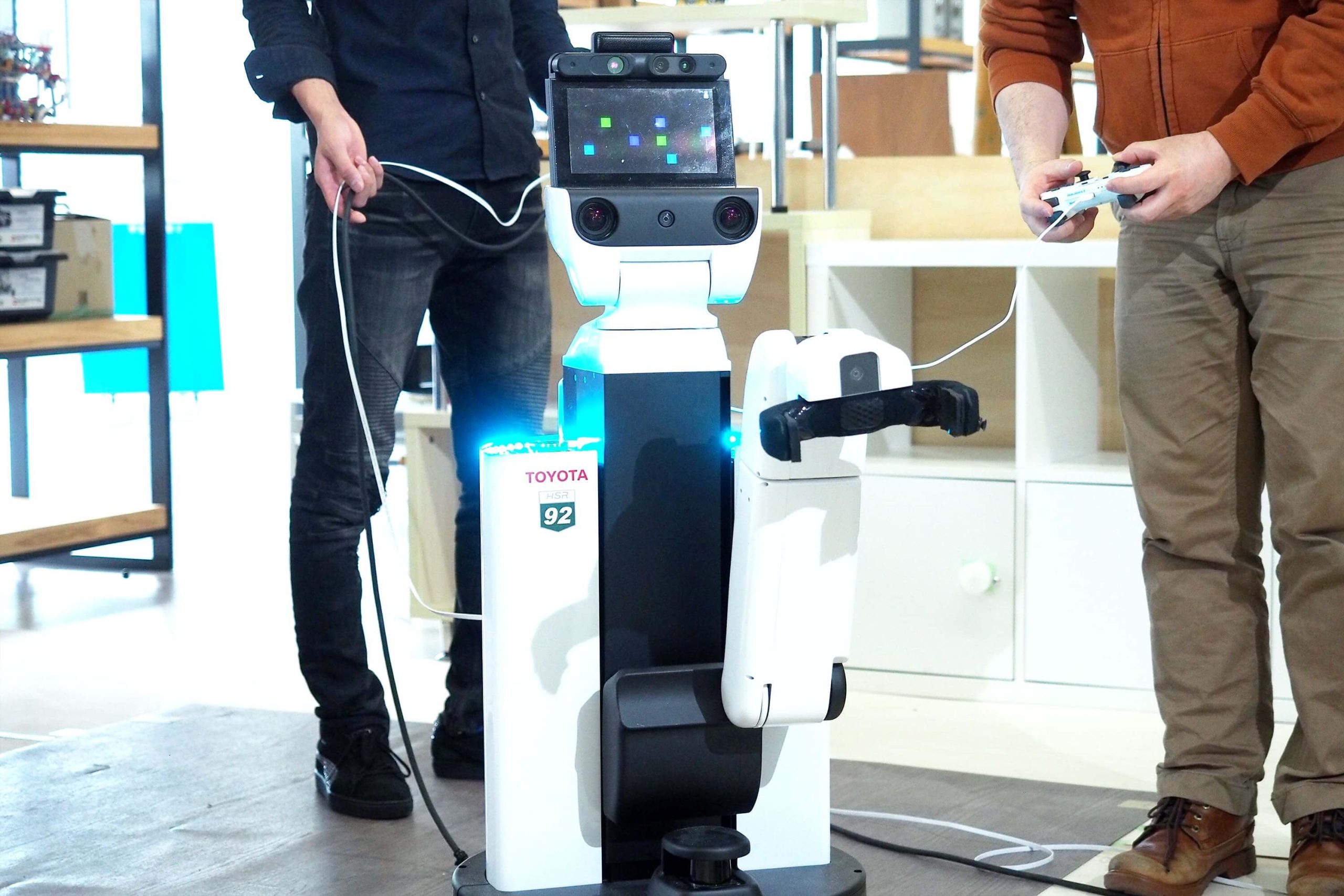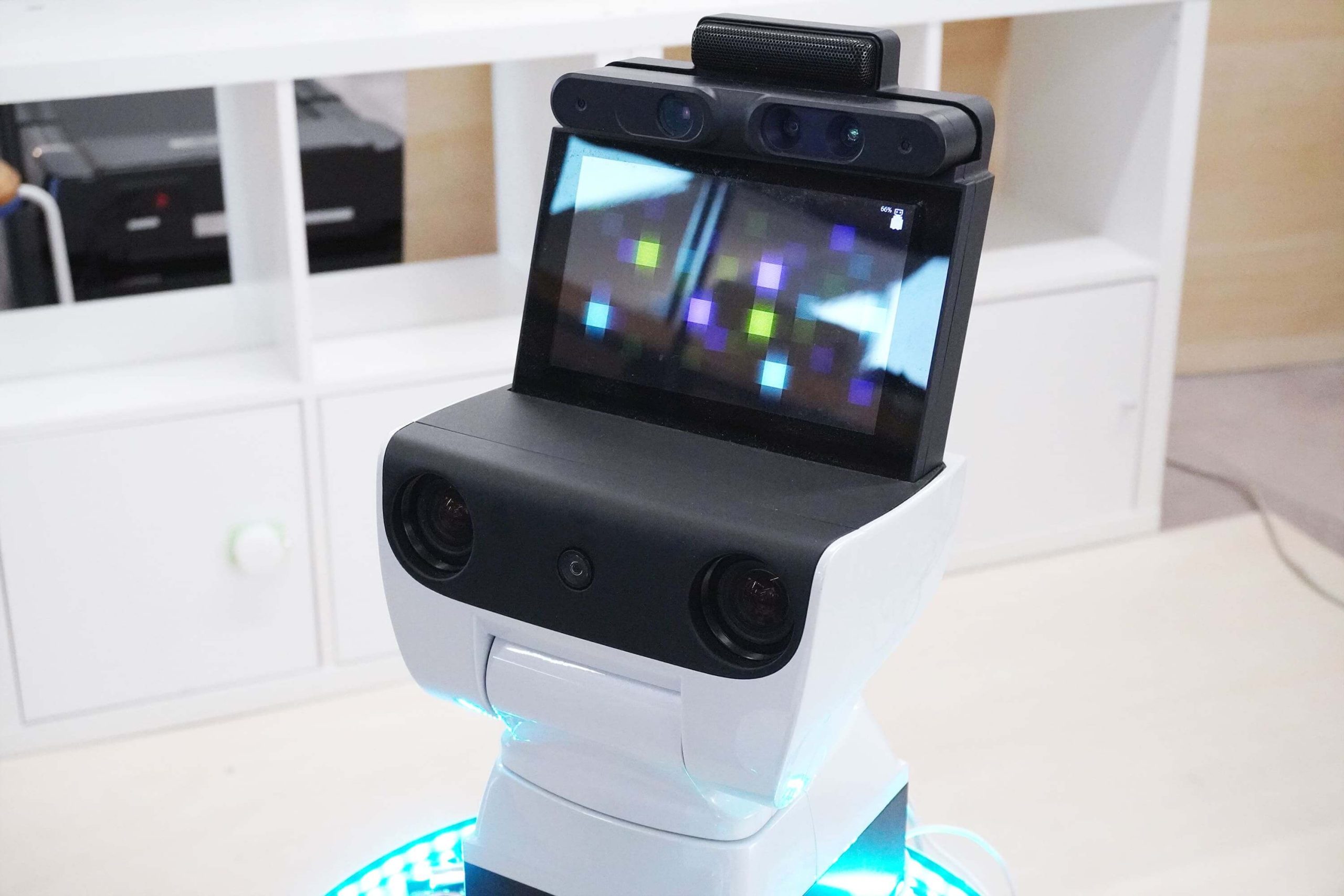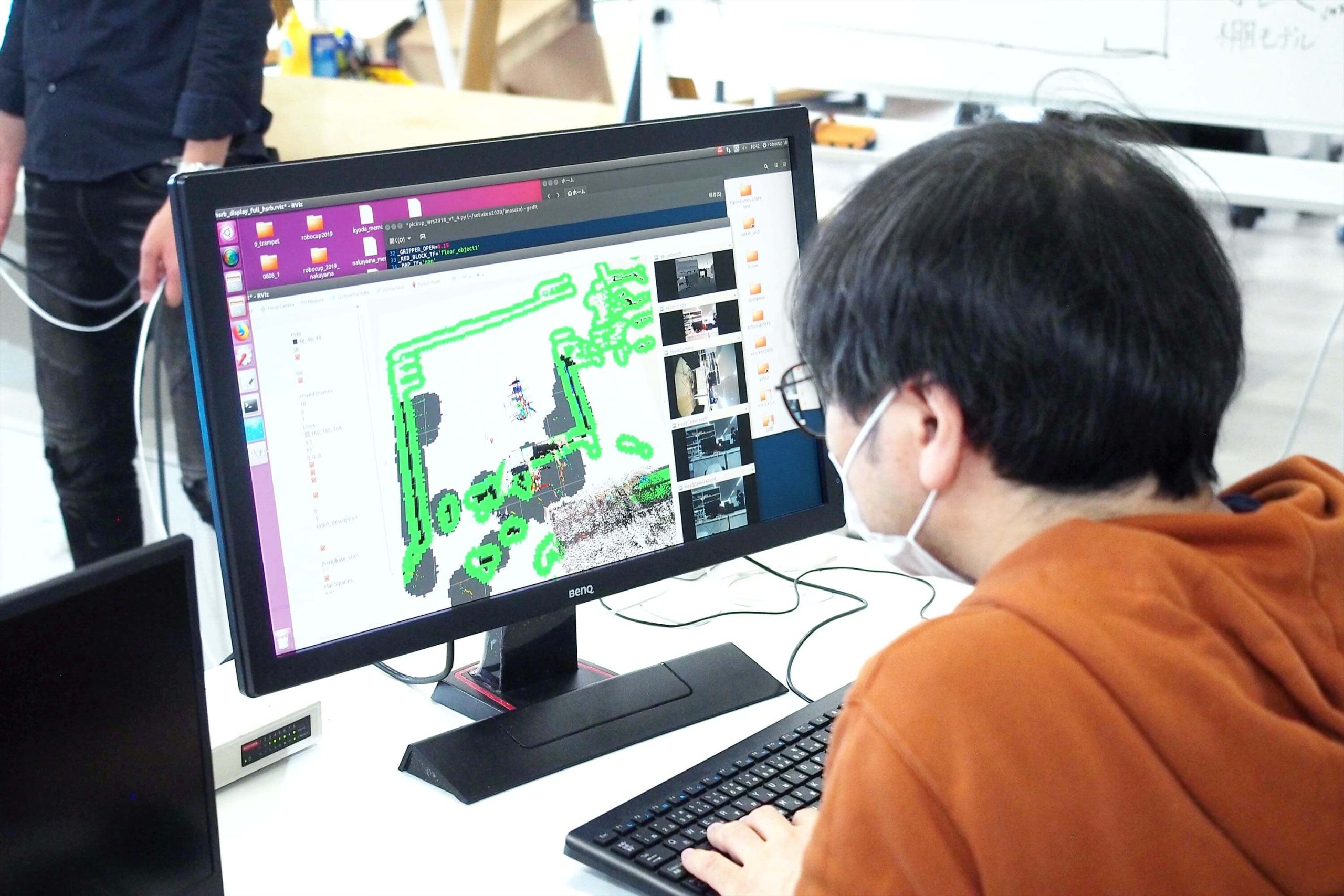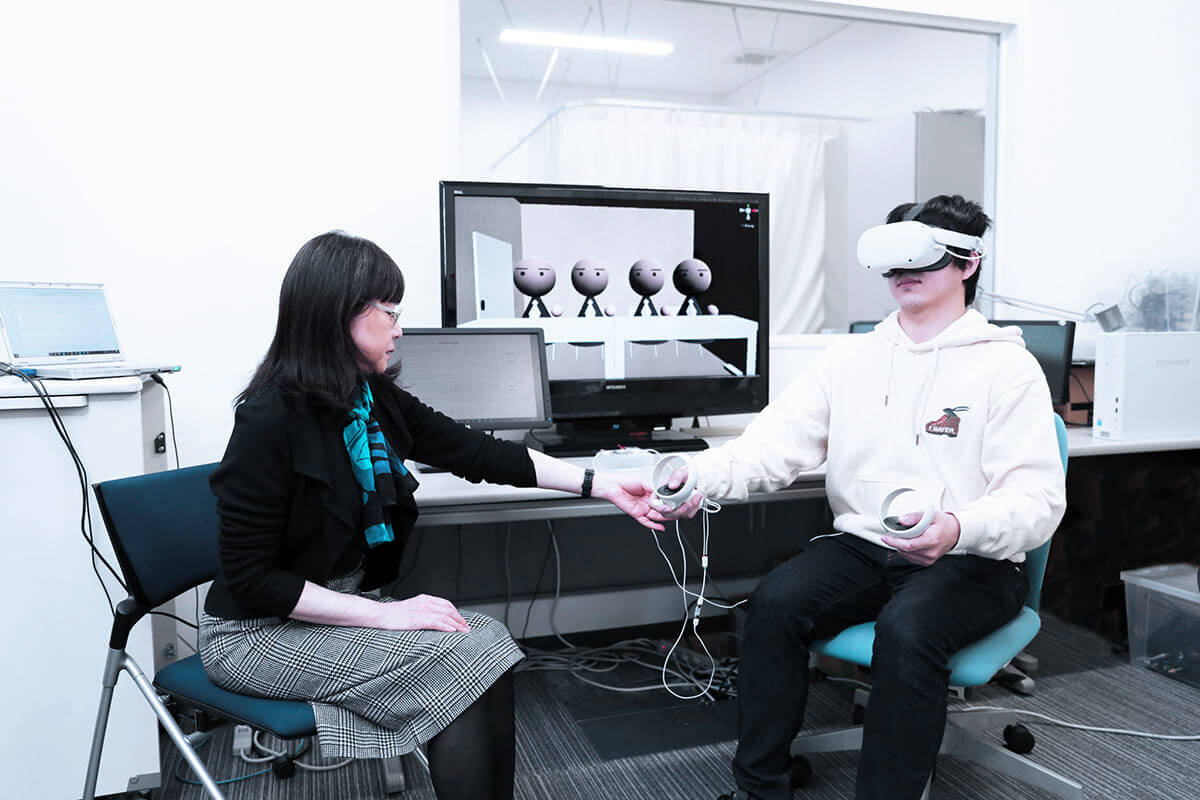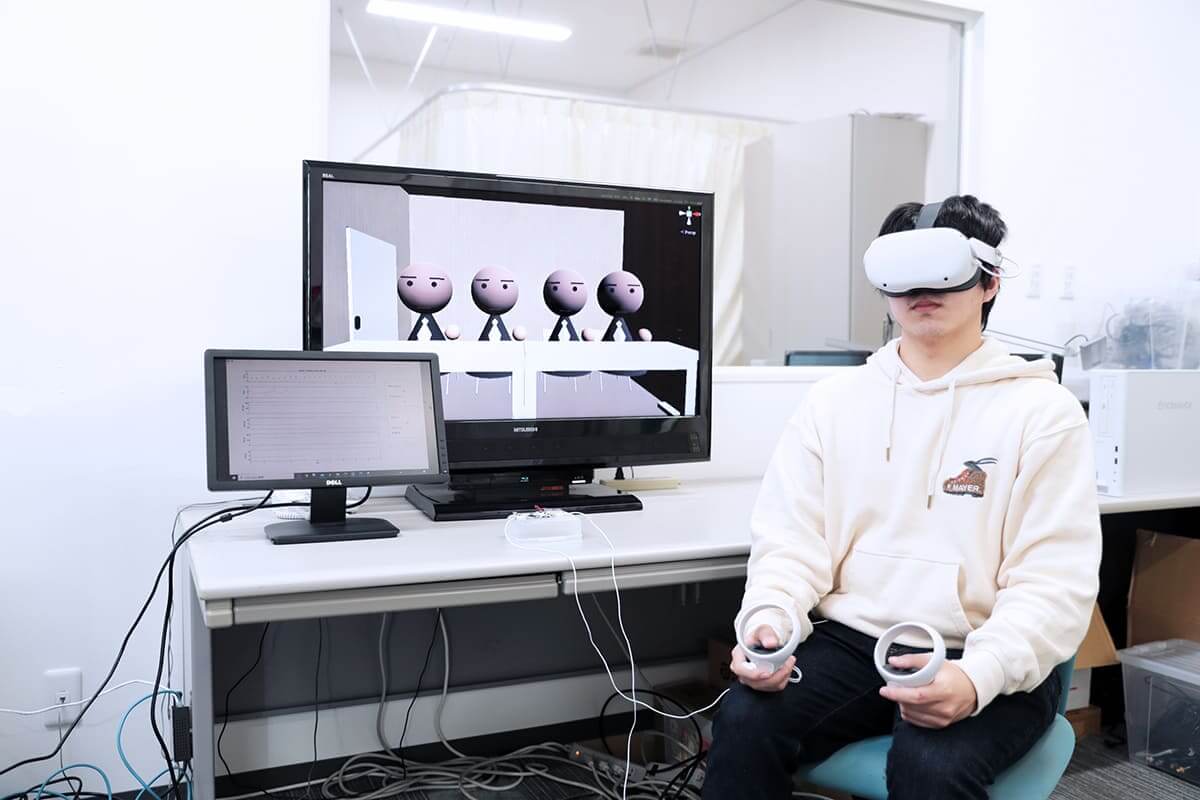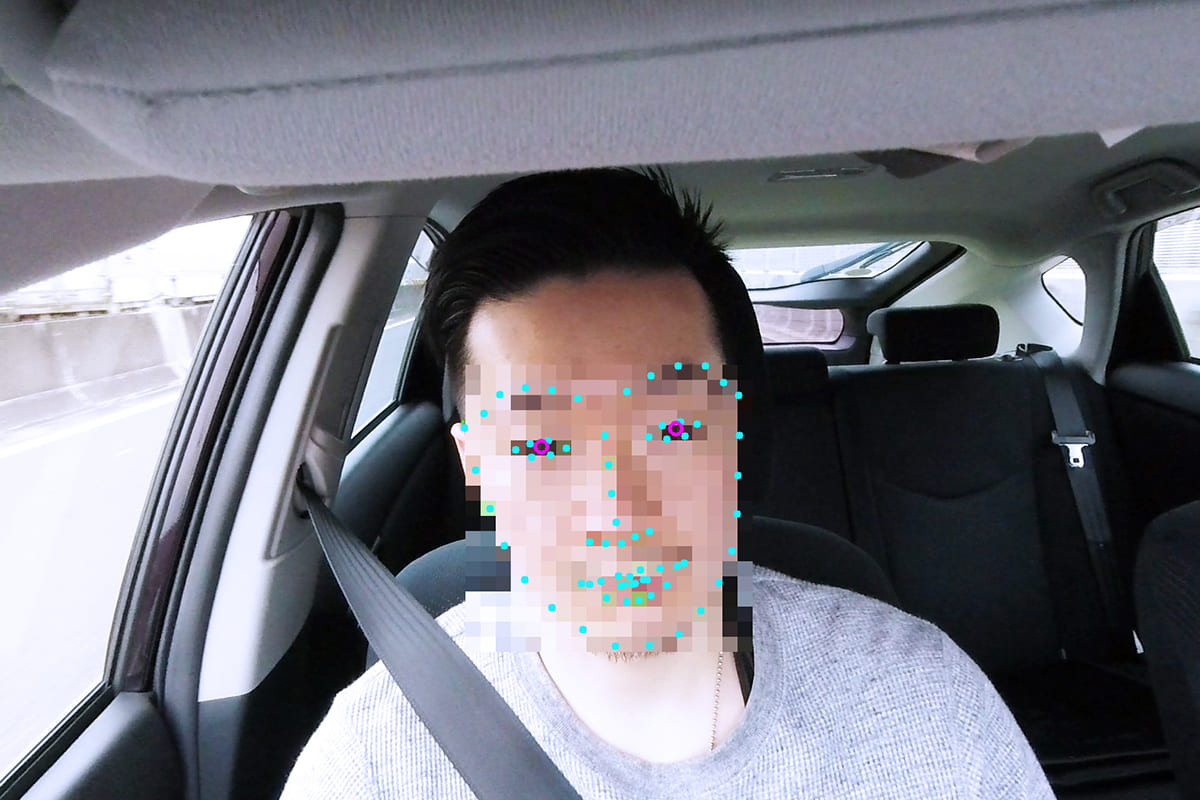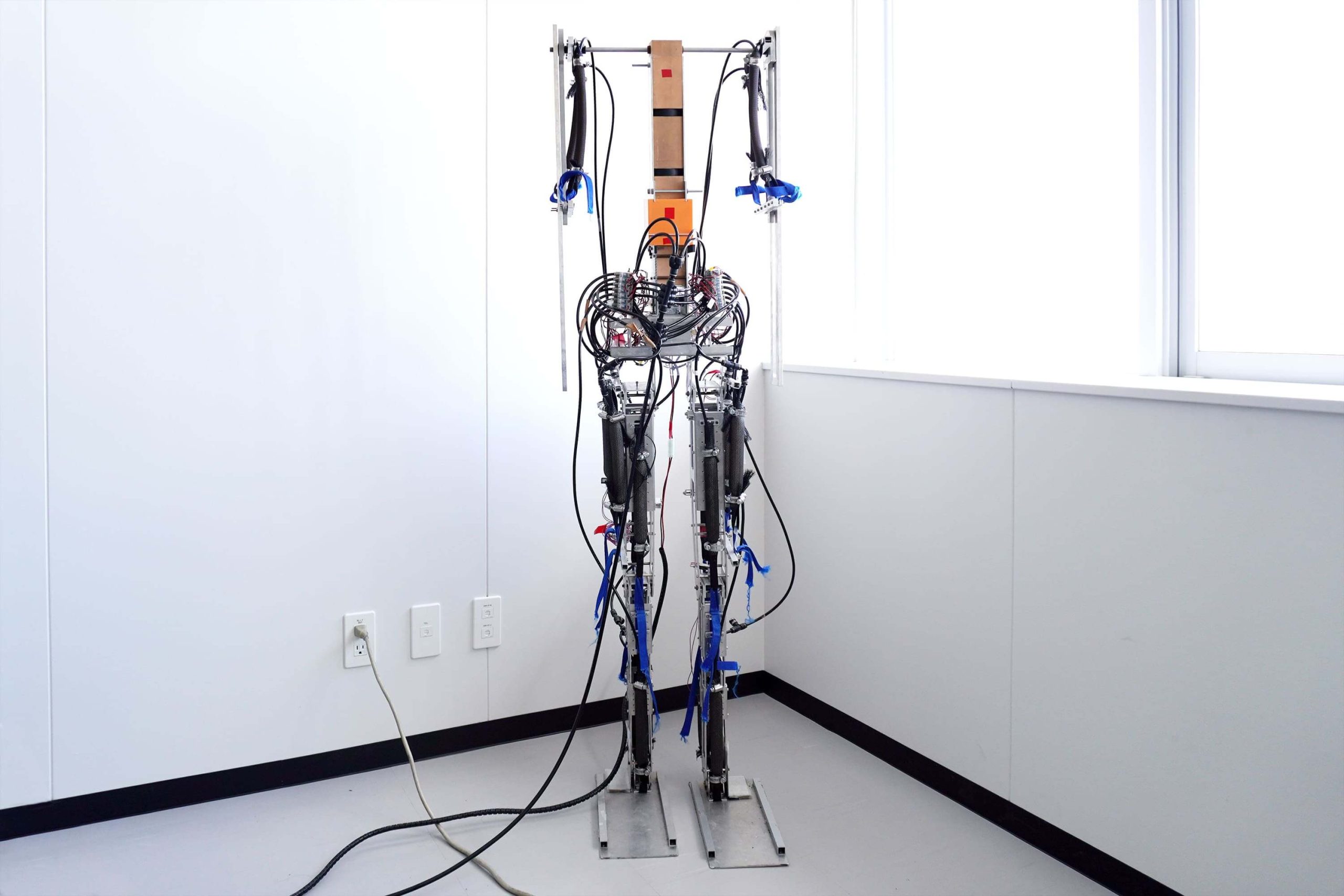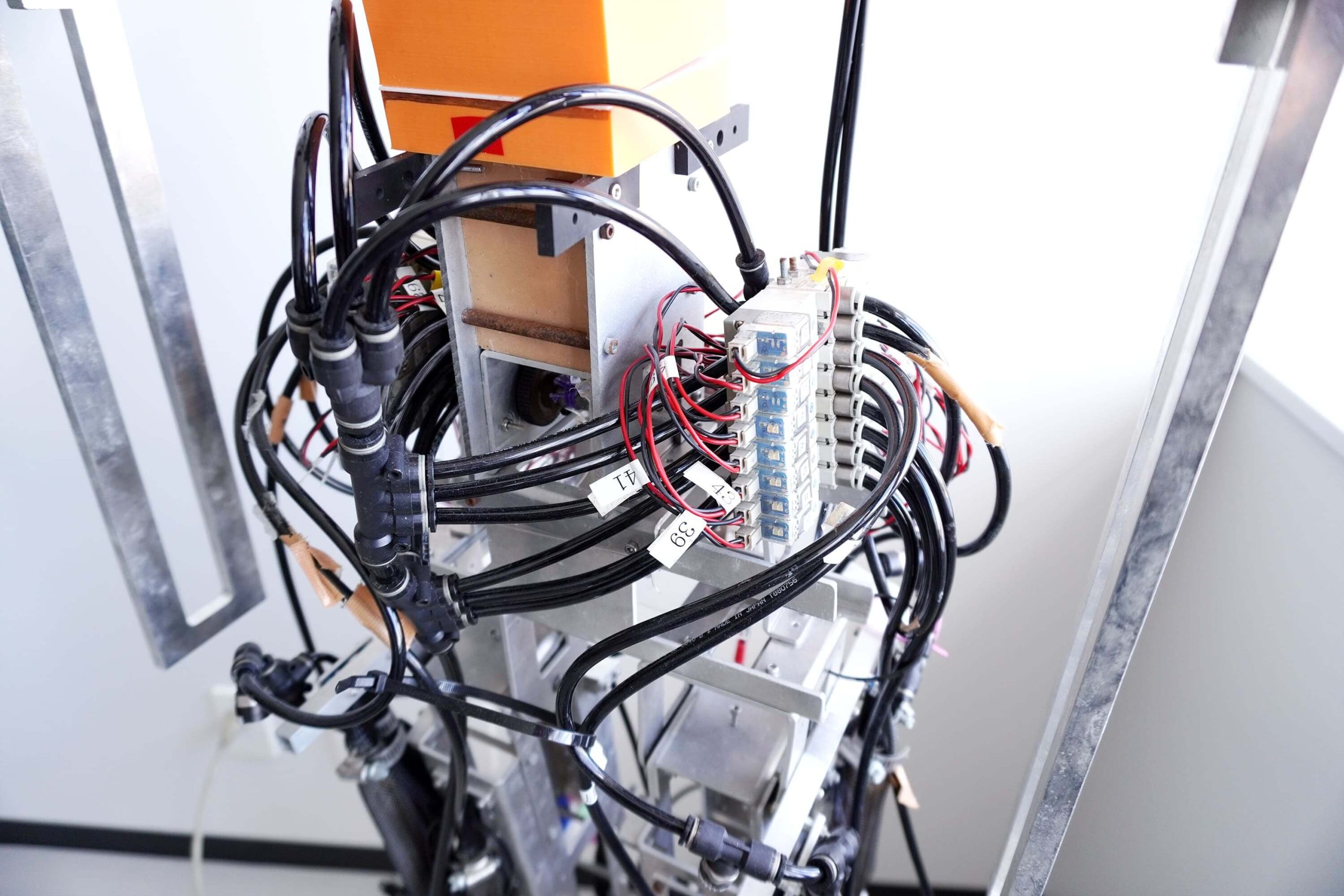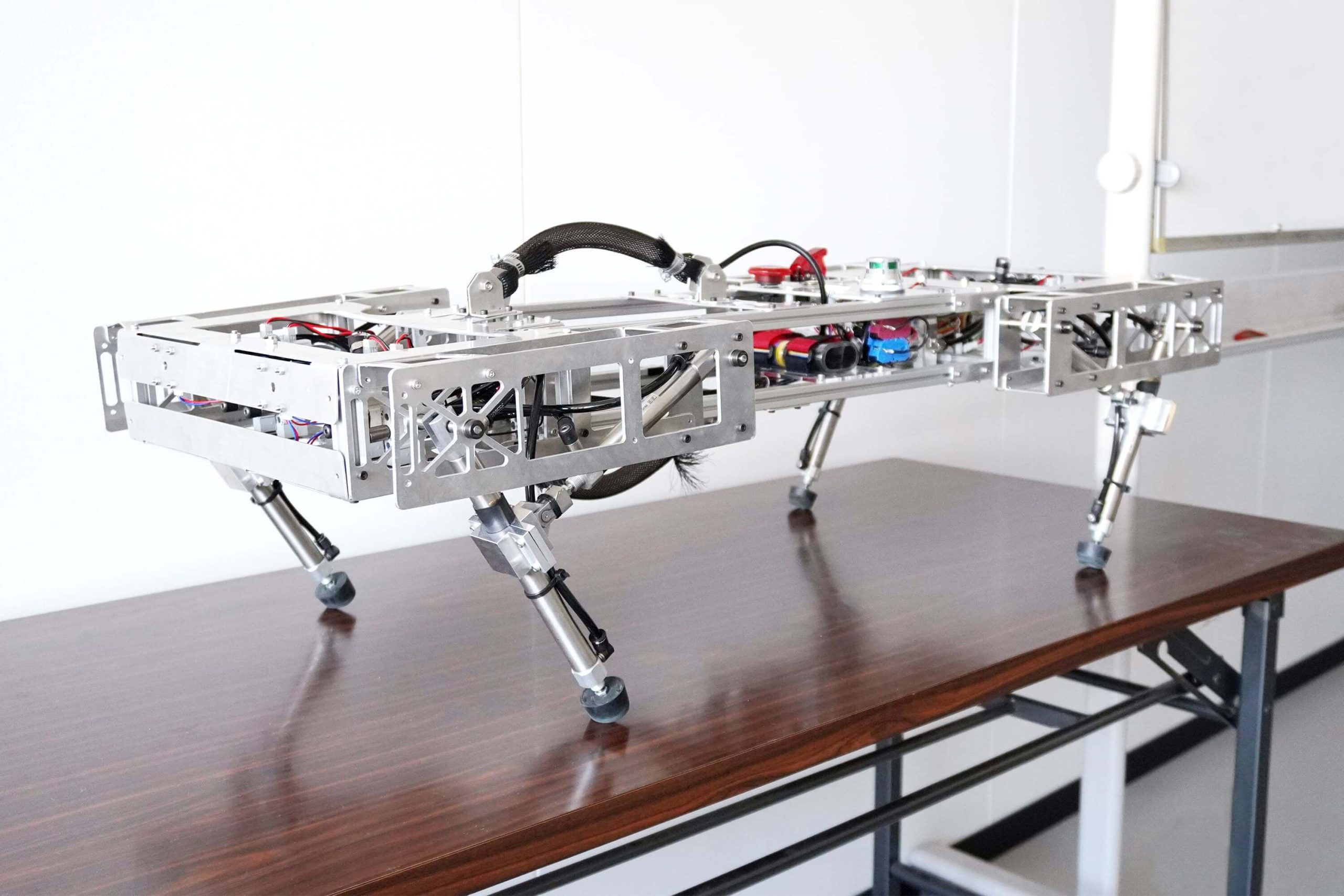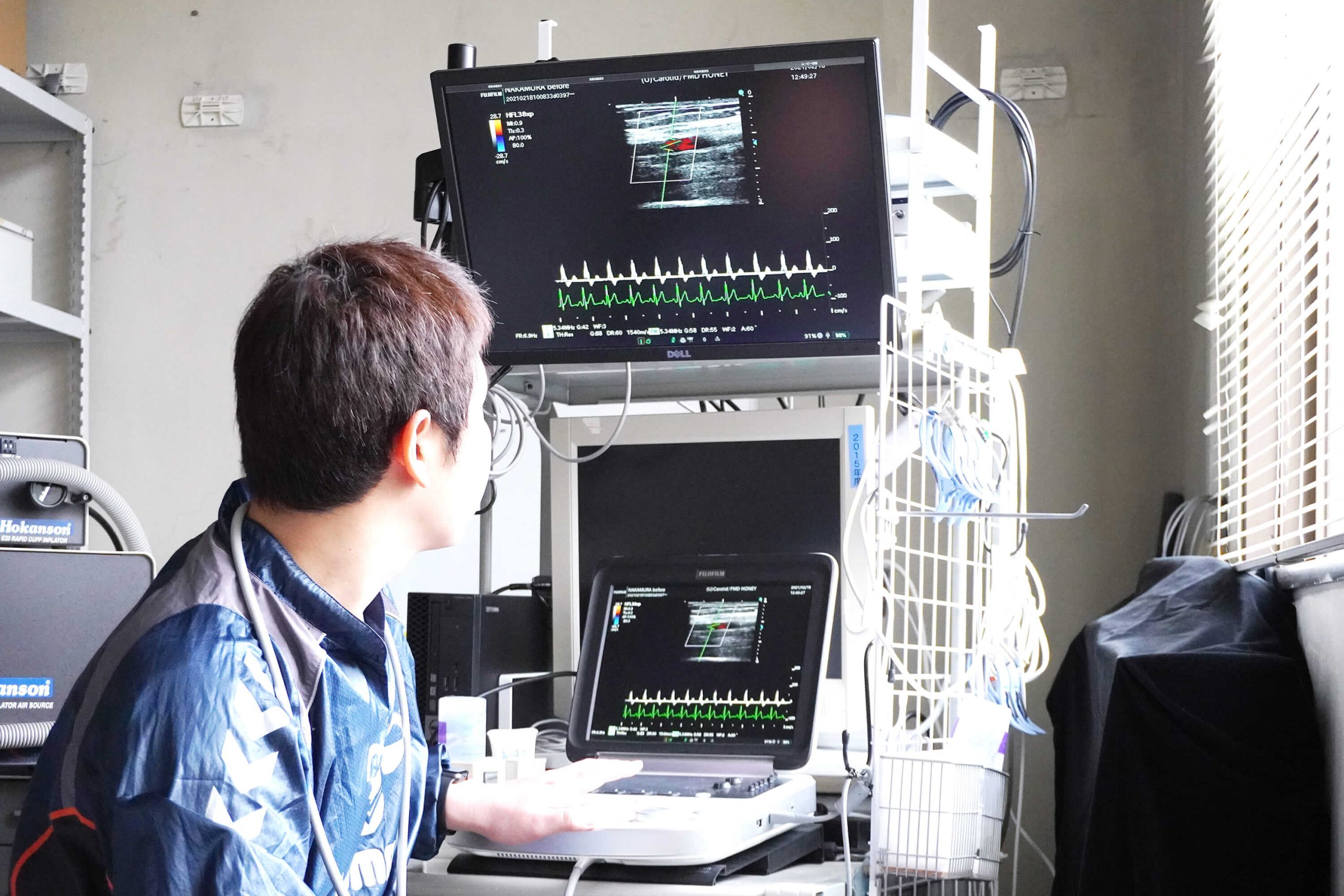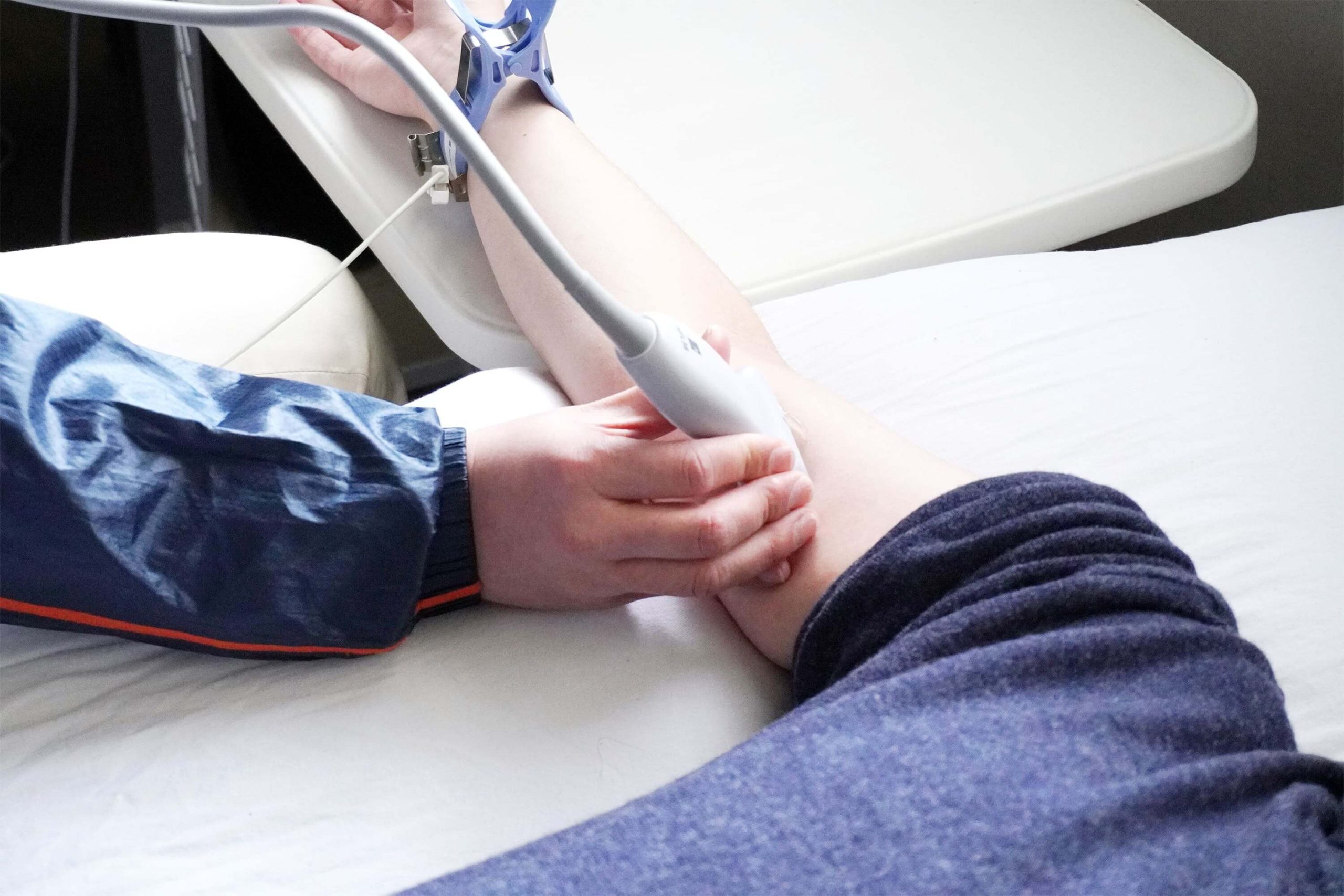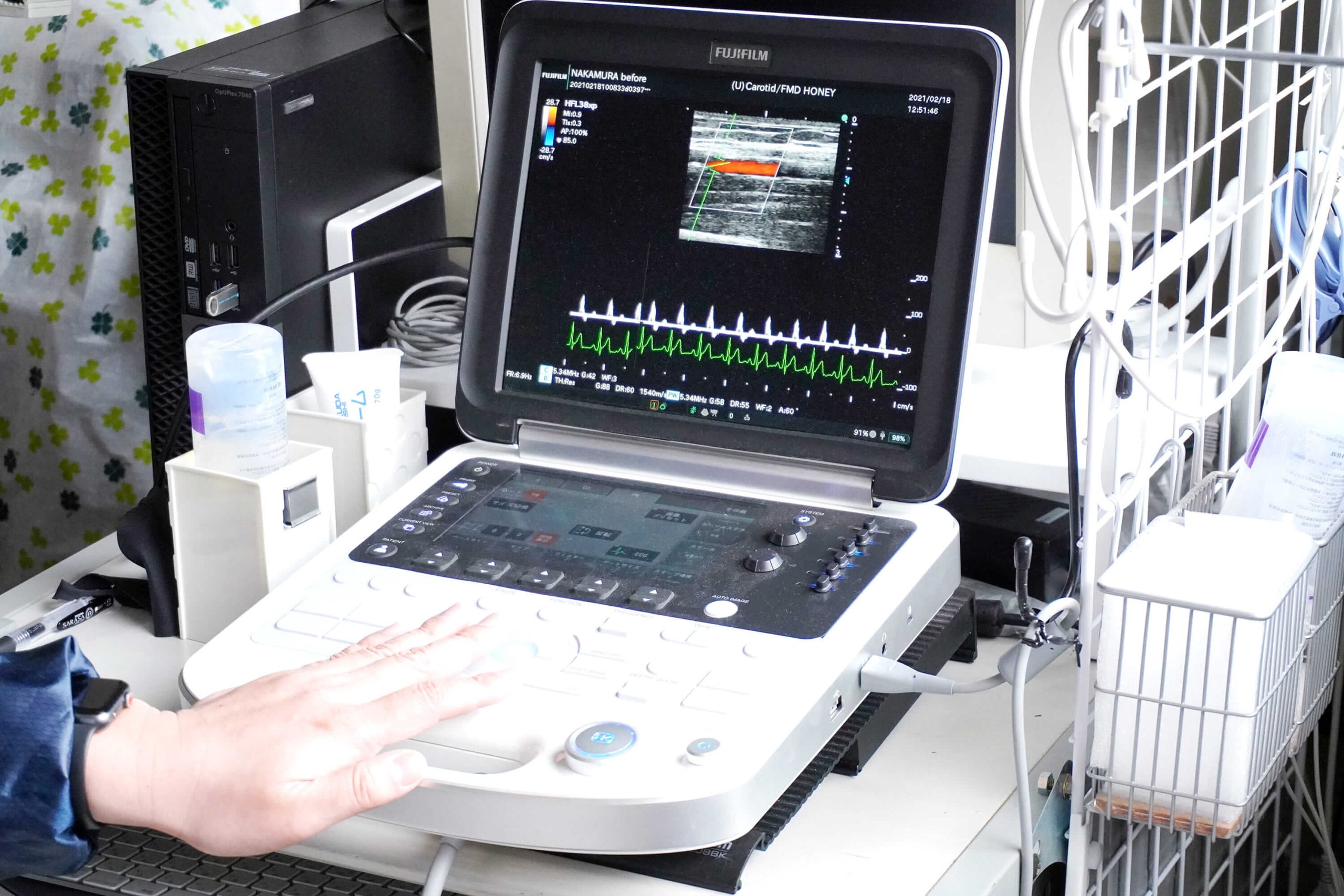OVERVIEW
With increasing need for nursing and welfare due to an aging population, Osaka Institute of Technology works on academic/practical research and development for the nursing and welfare of tomorrow, based on postgraduate courses that cover a wide range of engineering fields.
For example, rehabilitation equipment for foot joints that use soft actuators, powered prostheses that utilize digital fabrication such as 3D printing, as well as wheelchairs that can handle steps, new types of walkers for the elderly, and rehabilitation assistance equipment for standing. The field of robotics gives birth to robots with bodies that are flexible like biological organisms and have functions to control those bodies such as brains and nervous systems. Other research is also evolving on a daily basis, such as technologies for human sensing; measuring physical activity and estimating psychological state of human and the development of systems that utilize those technologies, as well as research into how exercise and the ingestion of food affects health.
MOVIE
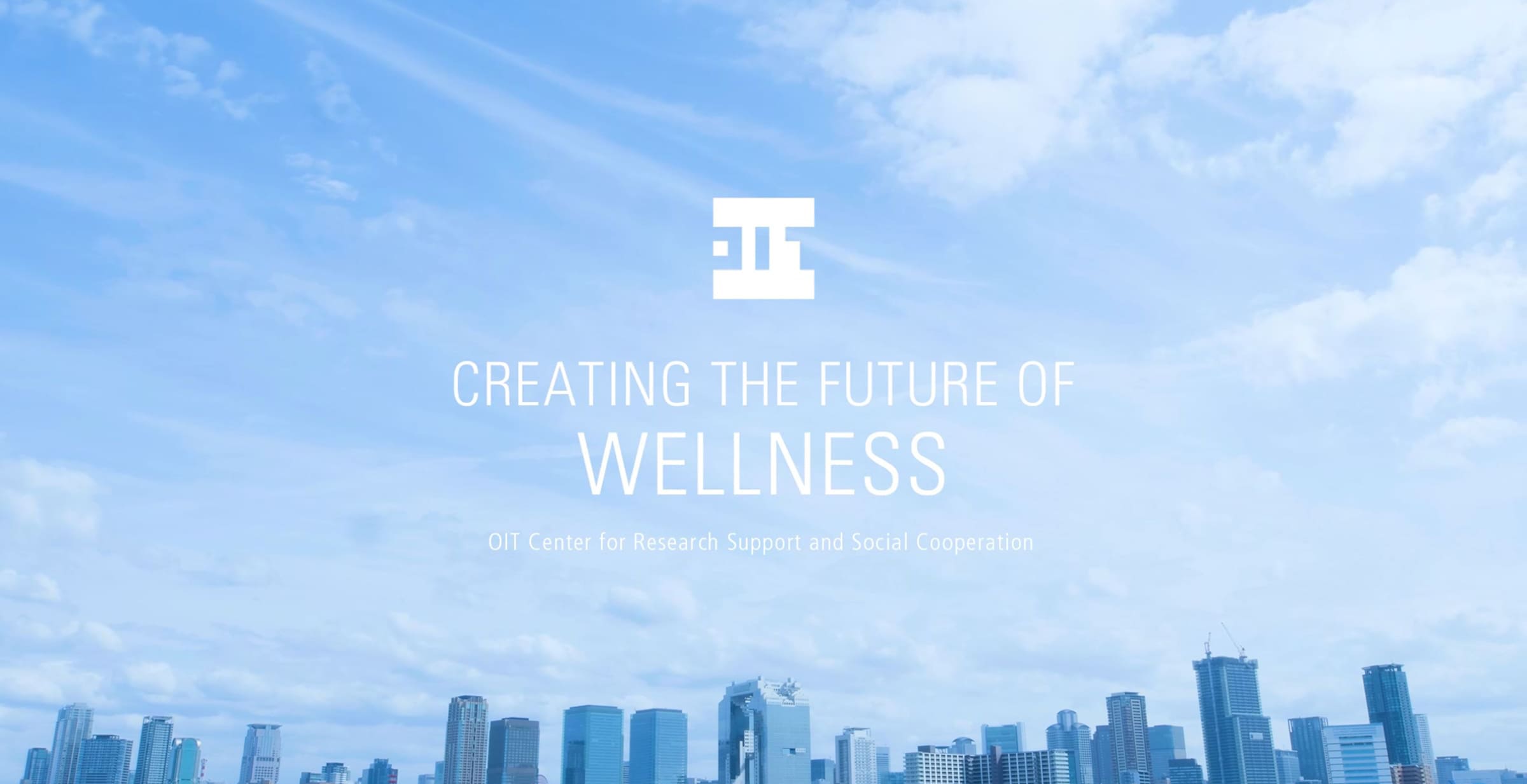
PROJECT
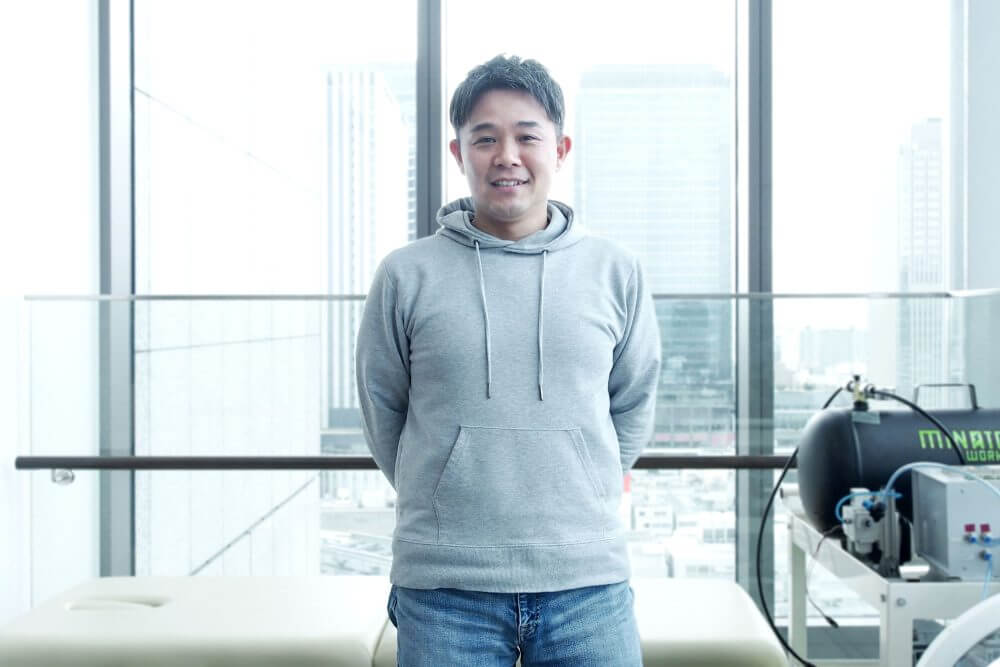
RESEARCHER
Department of Robotics
Flexible Robotics Laboratory
Associate Professor
Hironari Taniguchi
Description of Research
The actuators required for moving robots are devices for converting energy into mechanical motion, and are also referred to as drive sources or driving sources. At this laboratory, we develop various types of actuators such as shape-memory alloy artificial muscle actuators, hydraulic soft actuators, and soft actuators that merge functional fluids with rubber, and conduct research and development on medical, welfare, and nursing devices/robots such as powered prosthetic forearms for children using actuators, rehabilitation equipment for foot joints and fingers, and animal therapy robots that imitate Aurelia.
Research Topics
- Development of multi-rehabilitation system to provide muscle relaxation exercise and joint range of motion training
- Development of powered prosthetic forearms for children with a universal user interface
- Research into animal therapy robots that imitate Aurelia
- Research on hydraulic soft actuators
- Research on shape-memory alloy artificial muscle actuators
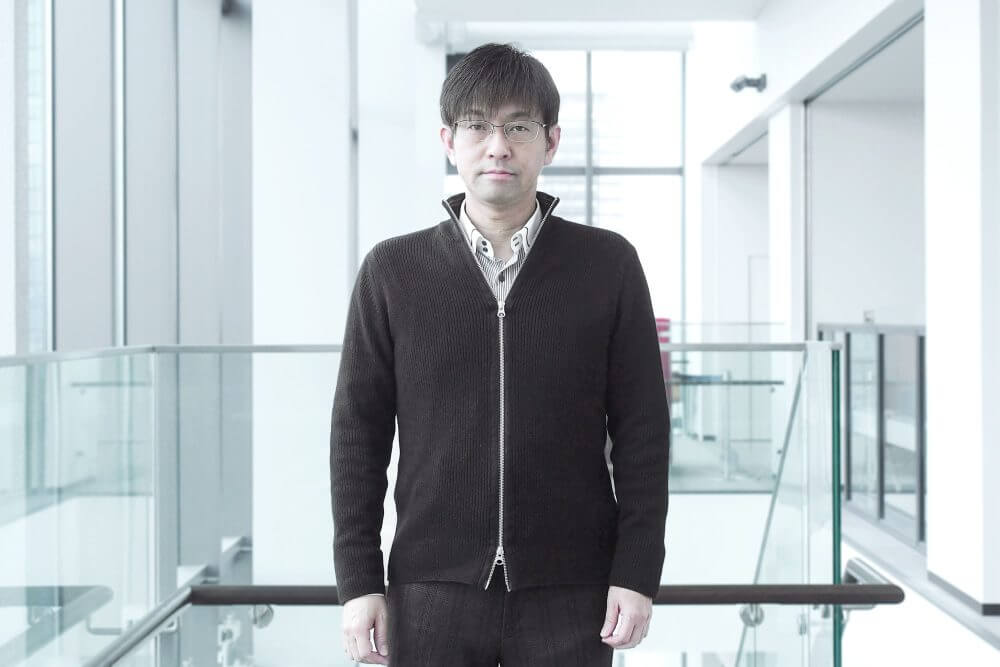
RESEARCHER
Department of System Design
Human Sensing Laboratory
Associate Professor
Tsuyoshi Inoue
Description of Research
At our laboratory, we have recently been conducting research on new value creation based on human sensing. The targets for such sensing include biosignals exemplified by electrocardiac and myoelectric signals, motion sensors and force sensors for sensing human movement and forces exerted externally, and the sensing of output performed by humans on other people or devices via audio or device operation input. Examples of current themes are research and development into the prediction and assistance for the action of standing up, and assistance for improving cycling technologies using the results of measuring muscle activity and body activity.
Research Topics
- Gesture recognition using wearable sensors
- Motion prediction/standing assistance using myoelectricity
- Pedaling assistance via real-time feedback on muscle activity
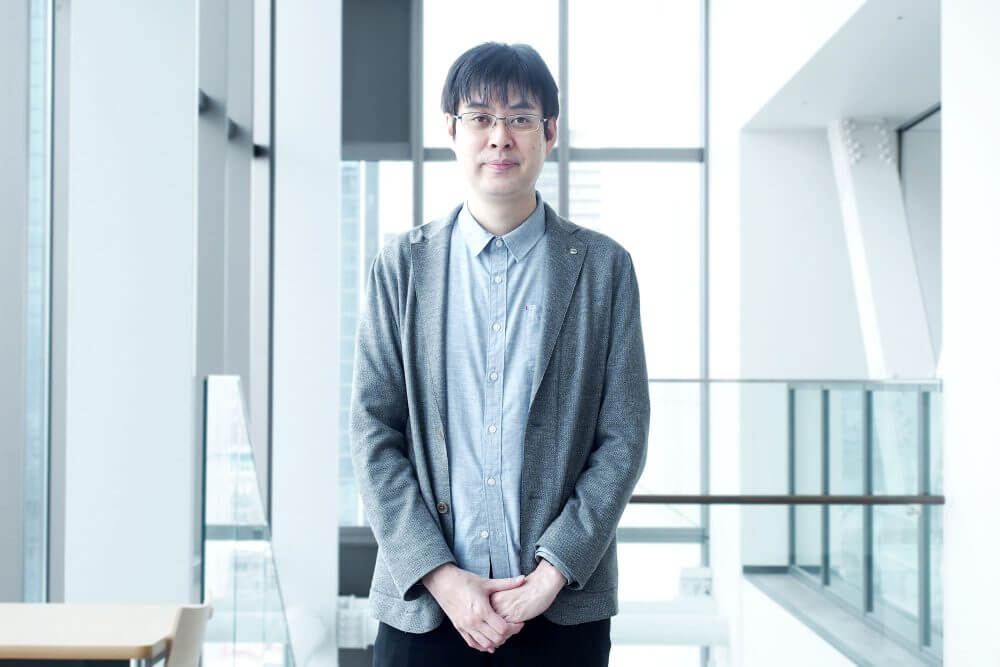
RESEARCHER
Department of Robotics
Assistive Device Laboratory
Associate Professor
Masahiro Yoshikawa
Description of Research
At this laboratory, we conduct research and development on welfare devices for assisting the lifestyles of the disabled by utilizing robotics, information science, and digital fabrication (3D CAD and 3D printing). We aim to achieve practical welfare devices with superior functionality and appearance. The main welfare devices that we focus on are powered prostheses. We develop various powered prostheses, such as those that are highly functional as tools and those with an appearance that mimics a real hand. We also develop tools for supporting researchers and medical workers in the field of caring for disabilities.
Research Topics
- Powered prosthesis with three opposing fingers that can be operated via muscle bulge sensing (Finch)
- Powered prosthesis with an appearance similar to a cosmetic arm
- Development of welfare devices utilizing digital fabrication
- Motion detection based on biosignals
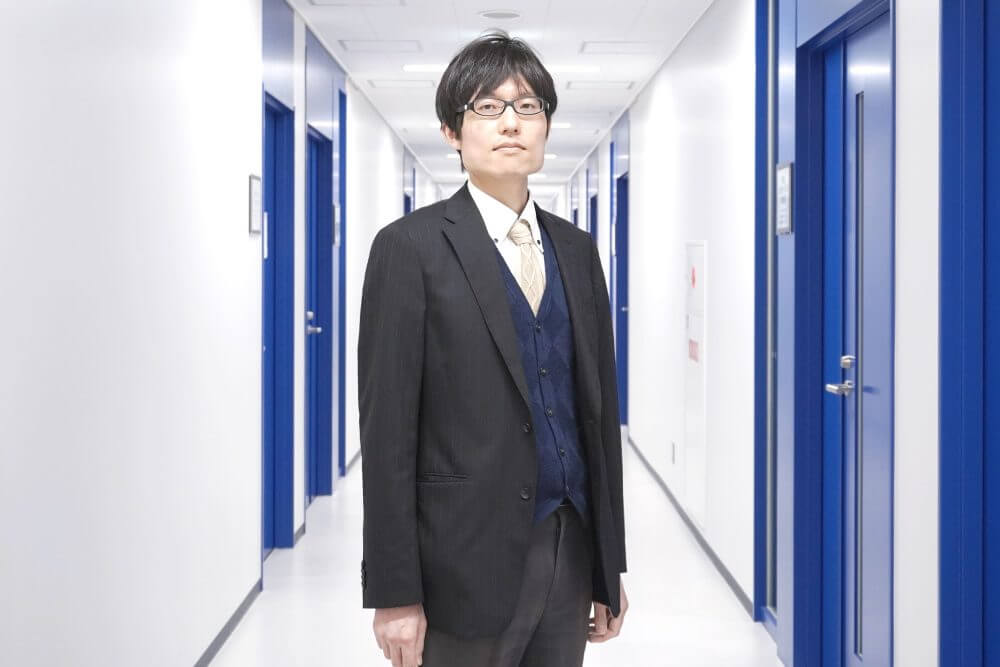
RESEARCHER
Department of Mechanical Engineering
Movement Assistance Systems Laboratory
Assistant Professor
Makoto Haraguchi
Description of Research
At this laboratory, we conduct research and development on nursing and welfare devices utilizing mechatronics technologies and mechanism design. In addition to devices that assist the mobility of users, such as wheelchairs that can handle steps for those with spinal injuries, new types of walkers for the elderly, rehabilitation assistance equipment for standing, and relief assistance suits for nursing workers, we also conduct development of finger rehabilitation equipment for stroke patients and undergarment wearing/removal systems for ALS patients.
Research Topics
- Standing rehabilitation assistance system
- Development of step clearing function
- New type of walker to promote spinal rotation
- Finger extension assistance rehabilitation apparatus
- Relief assistance suit

RESEARCHER
Department of System Design
Biomimetic Robotics Laboratory
Professor
Takayuki Nakayama
Description of Research
At this laboratory, we aim to achieve robots with deft motion like that of biological organisms, by modeling the mechanisms of organisms and adopting those mechanisms in the mechanism design and control system design of robots. More specifically, we develop non-powered assistance equipment that incorporates the structure of the musculoskeletal system and robots that imitate the body structure of biological organisms, build realtime environmental recognition systems utilizing brain computation theory, and develop environmental adaptive control systems resistant to disturbance such as communication lag.
Research Topics
- Achieving robots that can flexibly interact with environments by utilizing sparse structure model learning.
- Nimble robot motion control view delay acceleration feedback
- Development of non-powered assistance equipment
- Development of walking assistance equipment that is highly compatible with humans
- Development of neuro-rehabilitation assistance robots based on brain motion control models

RESEARCHER
Department of System Design
Wellness Laboratory
Professor
Mieko Ohsuga
Description of Research
Human-friendly robots and other artifacts must not only be safe and provide peace-of-mind, but also be able to understand human intentions and feelings when they move. This requires humans to be measured. Professor Ohsuga develops technologies for measuring heart beats, breathing, eye movement, brainwaves, and myoelectricity without placing an excessive burden on the person, researches methods for estimating human intentions and feelings based on that data, and develops systems for making use of that information.
Research Topics
- Development and evaluation of input interfaces using bio-signals (myoelectricity and brainwaves)
- Development of mind-body activation and calming systems using interactive 360-degree video
- Introduction and demonstration of the effectiveness of robots that help hospitalized patients and elderly people communicate with their families and the outside world
- Development of technologies for the low-burden measurement of heart beats and breathing and their application in estimating the state of human
- Research on evaluating the cognitive functions of the elderly using brainwaves (event related potential)
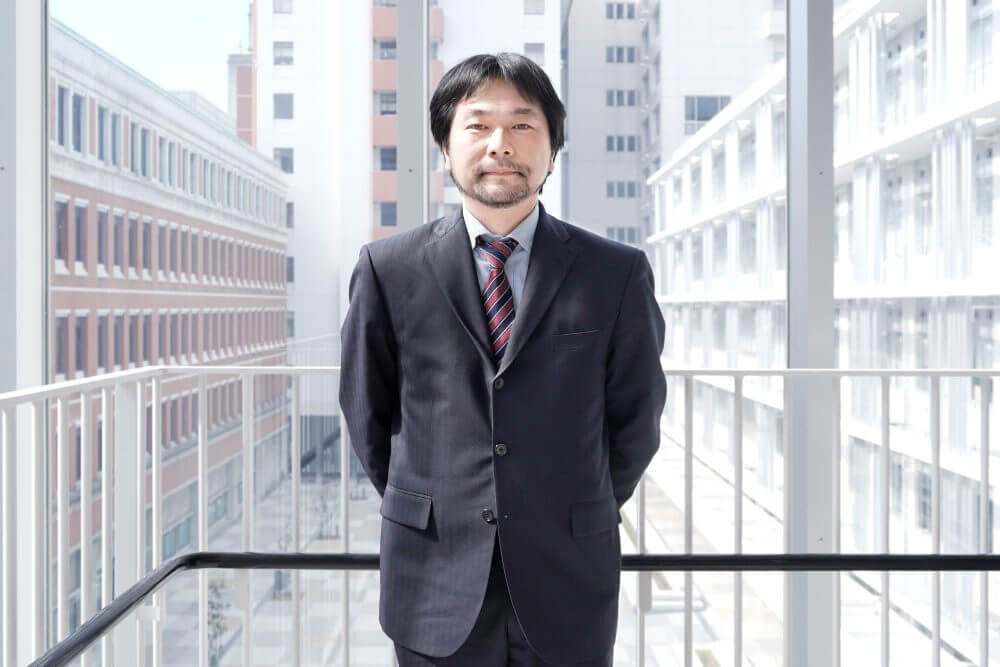
RESEARCHER
Department of Electrical and Electronic Systems Engineering
Robotics Laboratory
Professor
Takashi Takuma
Description of Research
One of the challenging issues in the robotics research area is to achieve dexterous and energy efficient motion like living animals as well as humans. The living animals have viscoelastic joint supported or driven by muscles and ligaments, and they drive their body by different mechanism from robot that has ‘rigid’ joint. We adopt viscoelasticity to the robot that is avoided to embed in the engineering field, and achieved novel motion that is difficult for the current robot such as jumping with higher impact, trunk twisting by the arm swinging, and invasion of the narrow path by changing its body according to the shape of the path. Currently, by progressing such achievement, we’ve aimed to develop the robot that moves around rough terrain and wreckage easily, enhance the human understand the dynamics of the human exercise capacity, and understand the dynamics of the human motion.
Research Topics
- Achieving stable jumping in human-like robots driven by artificial muscles
- Achieving diverse motion in quadrupedal robots with flexible trunks
- Achieving energy-efficient walking in bipedal robots with flexible trunks
- Achieving deft holding and handling using flexible materials in robust hands
- Development of intuitive robot model construction systems in virtual reality
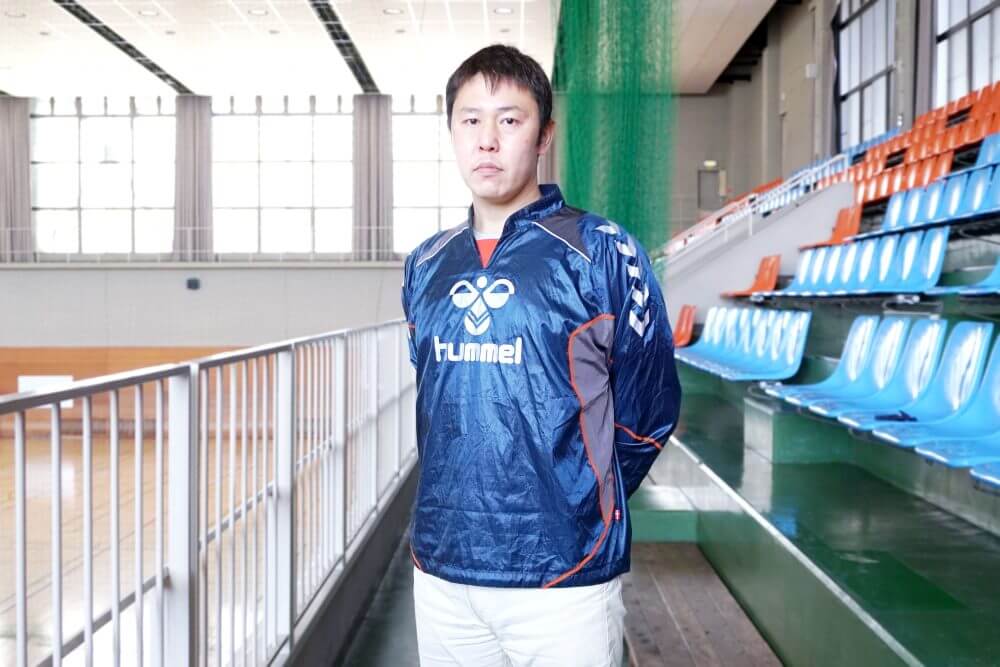
RESEARCHER
Division of Human Sciences
Section For Health-related Physical Education
Associate Professor
Masato Nishiwaki
Description of Research
Scientific technology has advanced to an extremely high level in contemporary society. It is no exaggeration to say that we live in a time where we must intentionally exercise and perform physical activity in order to remain healthy and alive. Would you like to learn about the benefits and burdens of scientific technology, while conducting research into human bodies and health, and the effects of exercise and the ingestion of food, so that Japanese people can achieve a healthier future? At this laboratory, we promote research into the effects that exercise and lifestyle habits have on health and the secrets to good health, with a focus on the hardening of arteries.
Research Topics
- Research on how exercise and physical activity can improve arterial stiffness and endothelial function
- Research on how food and supplements can improve arterial stiffness and endothelial function
- Research on the effect of hypoxic training
CONTACT US
For any inquiry about this project, please contact Center for Research Administration & Social Outreach.


